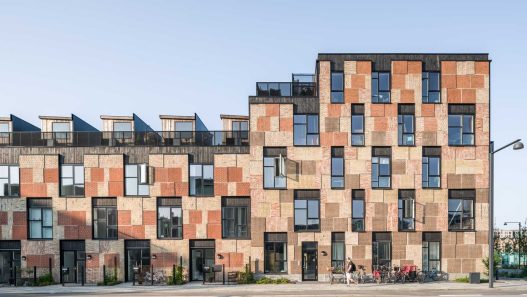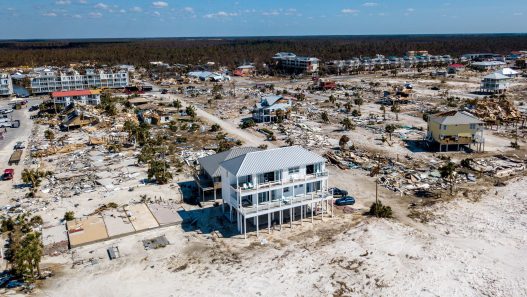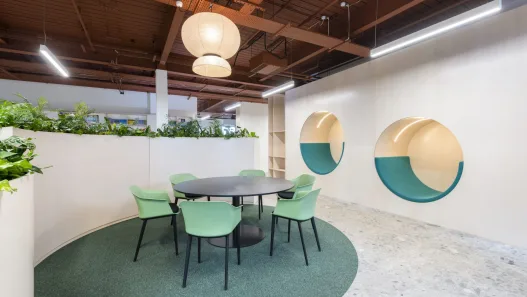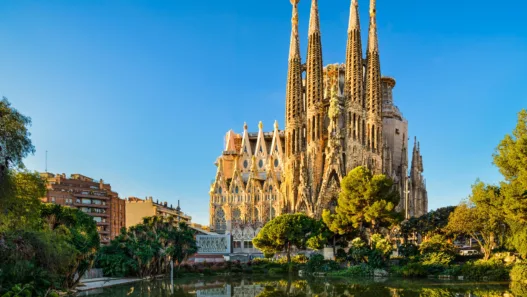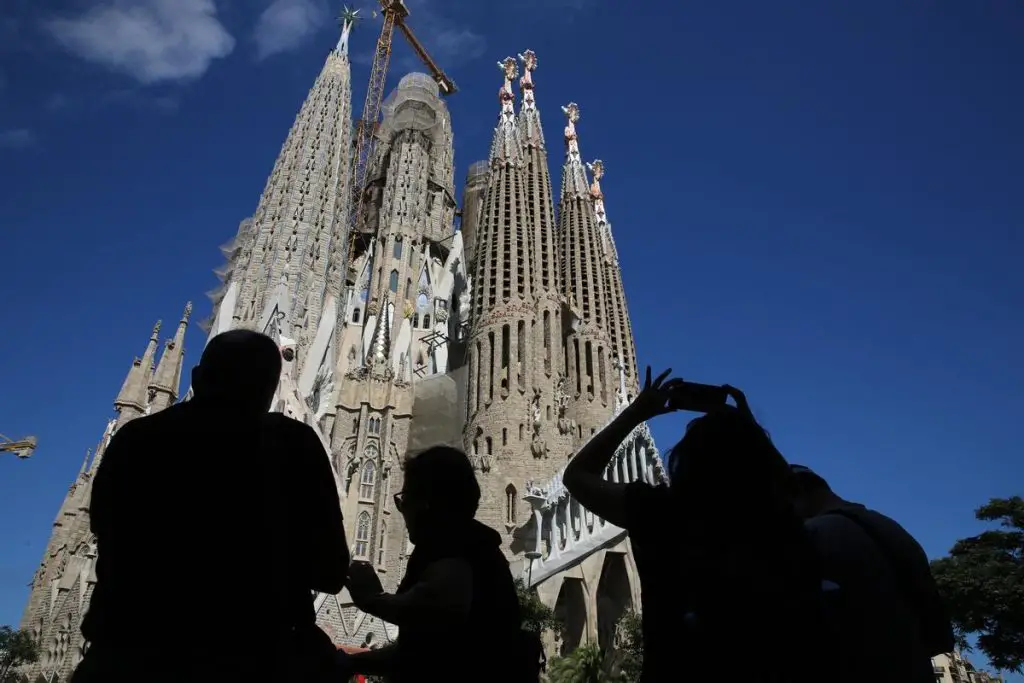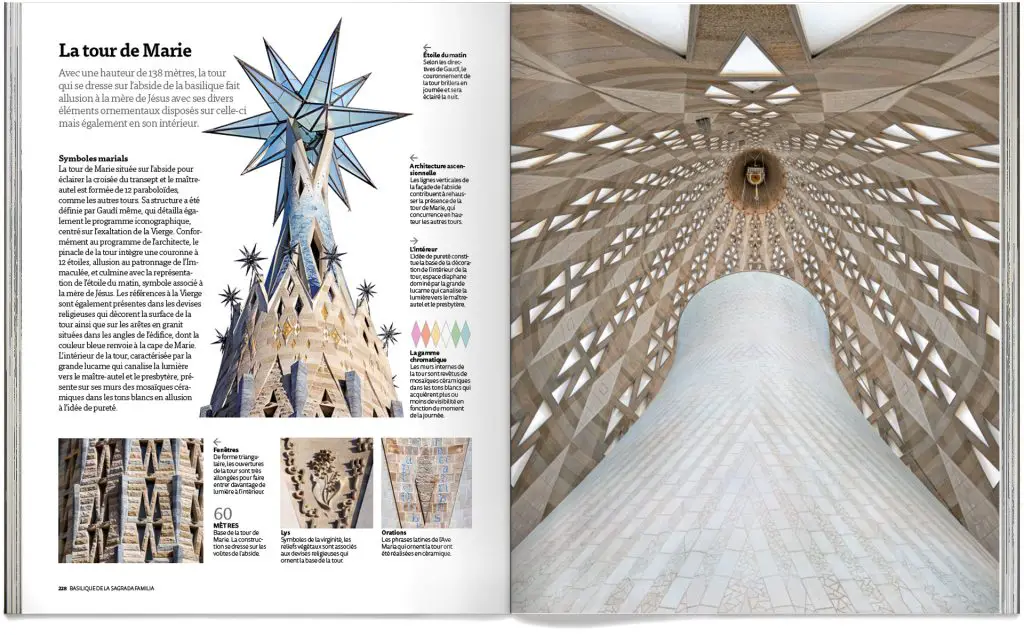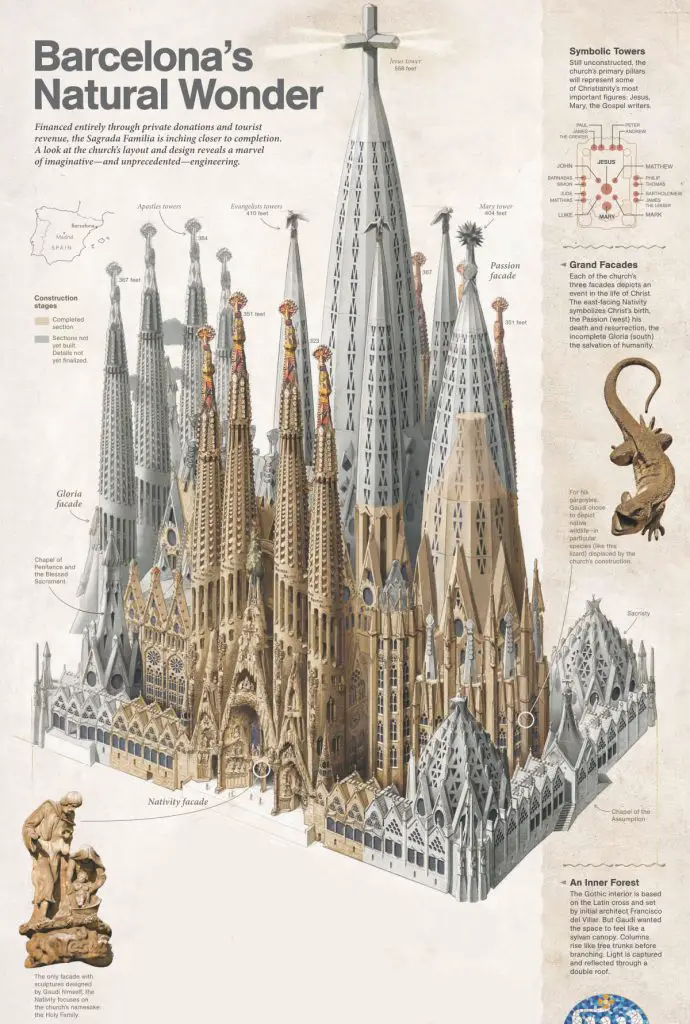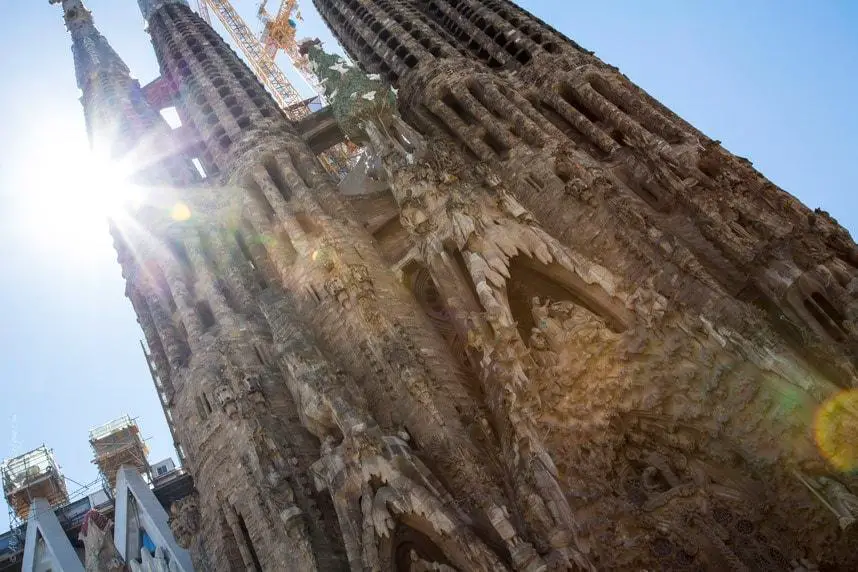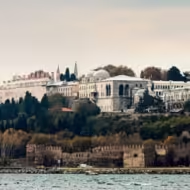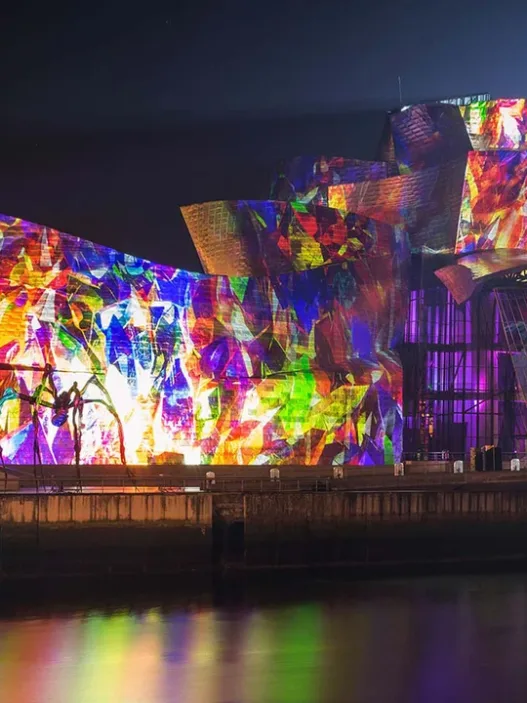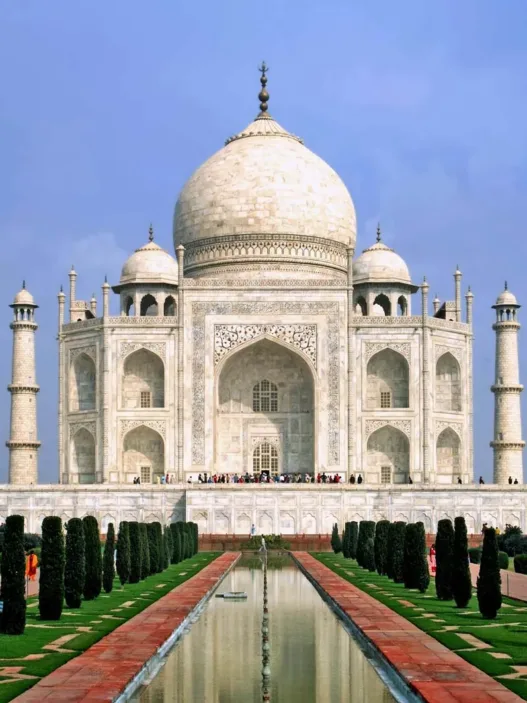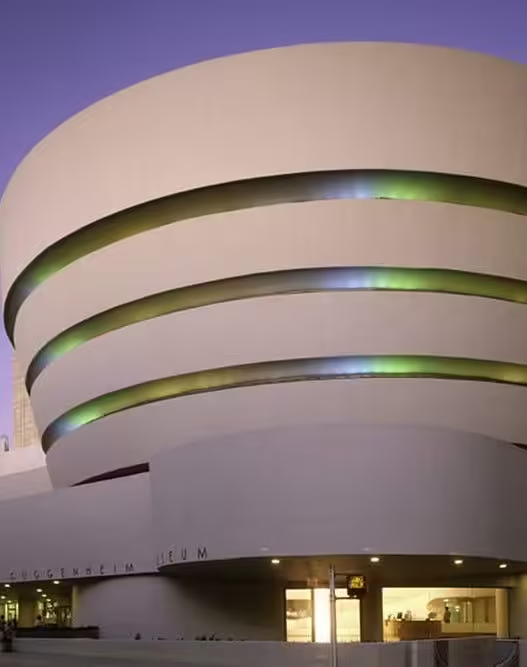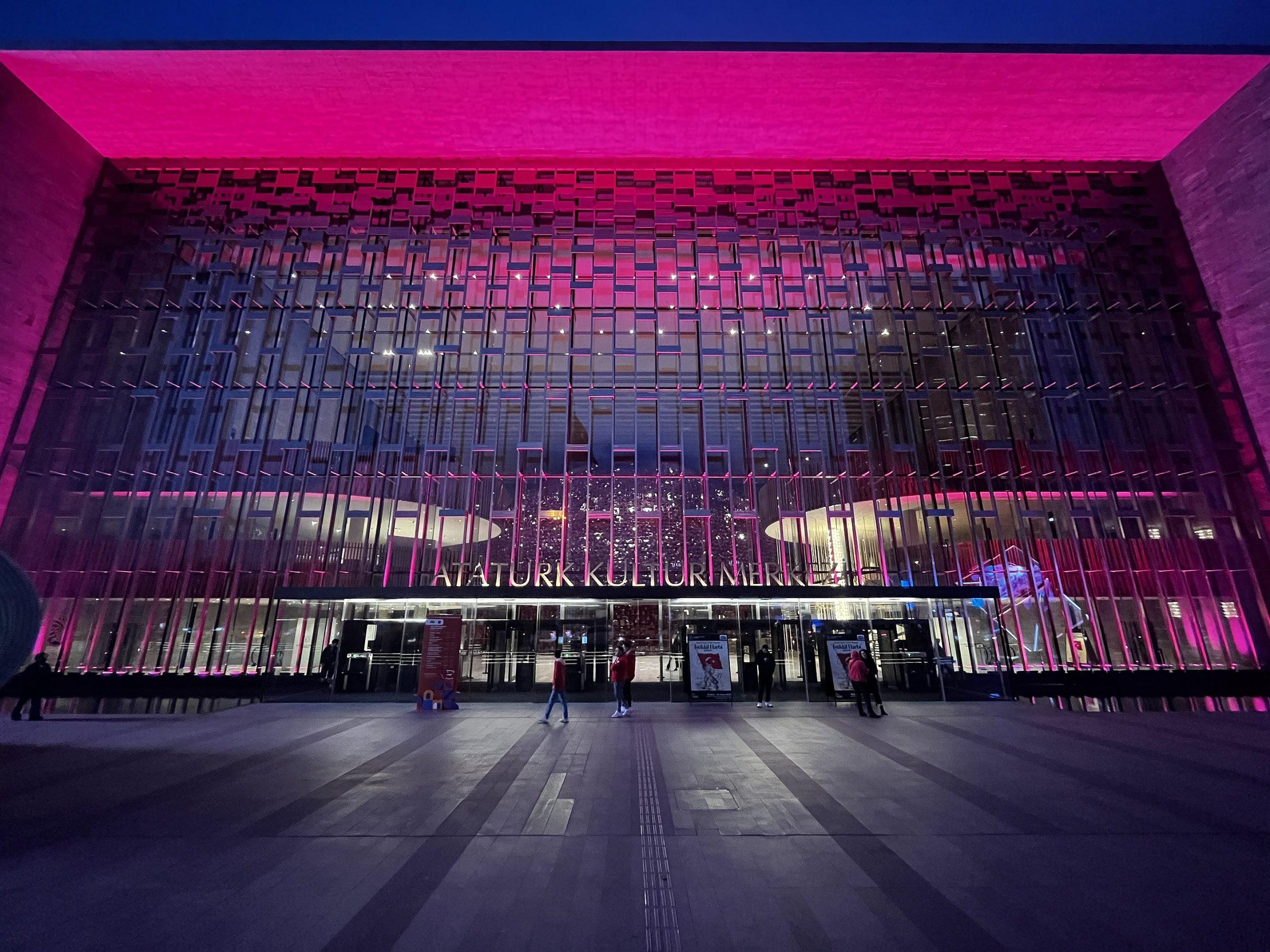La Sagrada Familia is a masterpiece of unusual design and striking appearance in Barcelona, Spain. Designed by Spanish architect Antoni Gaudí, it will be one of the largest religious buildings in the world when it is completed in 2026. Gaudí’s architectural style is characterized by organic forms, natural motifs and remarkable details. La Sagrada Familia is considered one of Antoni Gaudí’s most important works and has become an icon of Barcelona.
- La Sagrada Familia was designed by Antoni Gaudí and has become a symbol of Barcelona.
- Gaudí’s design uniquely combines the organic forms of nature and religious symbols.
- Although construction began in 1882, it is still unfinished and is scheduled to be finished in 2026.
- The architectural expression of La Sagrada Familia reflects Gaudí’s forward-thinking design approach.
- The interior has a charming atmosphere with high ceilings and colorful stained glass windows.
- Gaudí’s design approaches beyond his time offer a unique combination of modernism and gothic elements.
- La Sagrada Familia is an important example of technological innovation in architecture.
- Its completion is expected to increase Barcelona’s tourist appeal and serve as a source of inspiration in the field of architecture.
- La Sagrada Familia has a mesmerizing atmosphere that combines aesthetic and spiritual feelings.
- The building offers visitors a unique experience with its combination of religious symbols and artistic expressions.
Let’s take a look at this gigantic experience and worship space.

Design of La Sagrada Familia
The design of La Sagrada Familia reflects Gaudí’s unique approach of combining nature and religious symbols. Although construction began in 1882, the church is still unfinished. After Gaudí’s death, many different architects joined the project and the building is scheduled to be completed in 2026.
The exterior of La Sagrada Familia is derived from the motifs carved into the facade. Gaudí’s organic style and figurative ornamentation can be seen even in the completed sections. Christian iconography, nature motifs and symbols of religious stories can be seen on all the facades of the building. The towers are decorated with sculptures and stained glass windows. Every detail has been carefully thought out and designed.
The interior is designed in harmony with the exterior. High arches, columns and large windows give the space an enchanting atmosphere. Thanks to the light trails created, they combine with the light emitted by the colored stained glass windows to create a mystical feeling. Each stained glass window tells religious stories, figures and symbols.
Architectural expression of La Sagrada Familia
La Sagrada Familia is a building that is truly mesmerizing and magnificent in its architectural expression. Gaudí’s organic style and meticulous attention to detail give the church a unique character and language. The complex domes, curved lines and natural forms of the building mimic nature while merging with religious symbols.
The design of the church is an inspiring example of the future of architecture. Gaudí used advanced technologies and design principles during construction to create the architectural highlights and artistry of La Sagrada Familia.

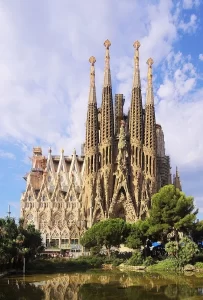
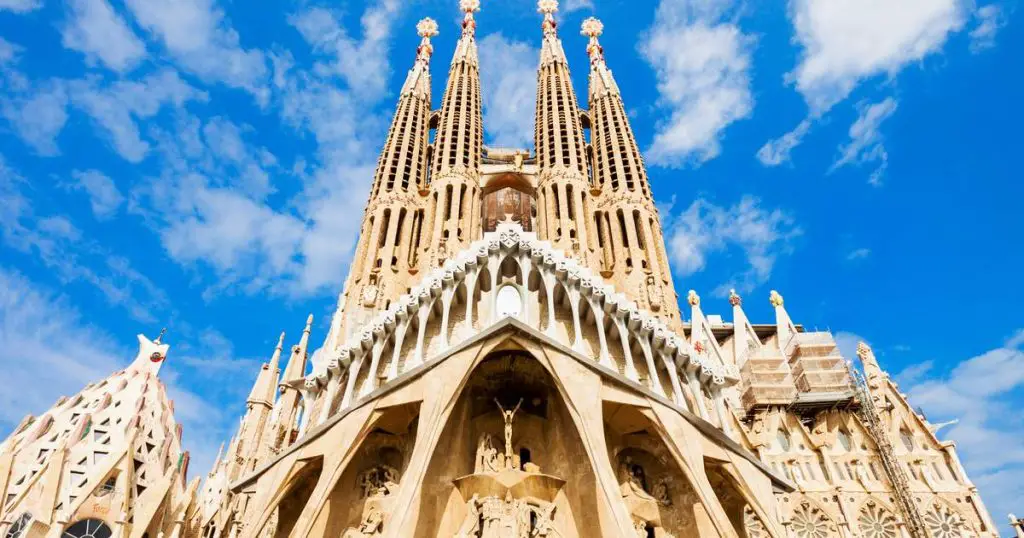
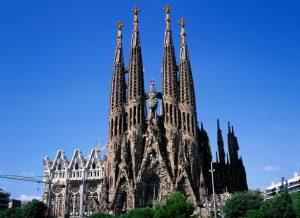
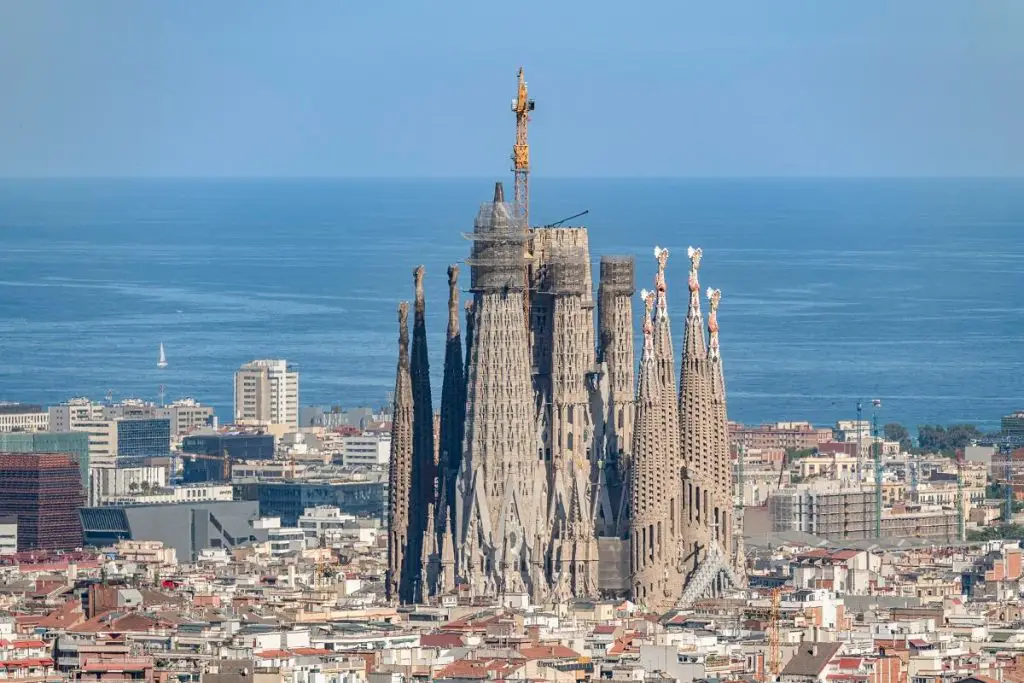
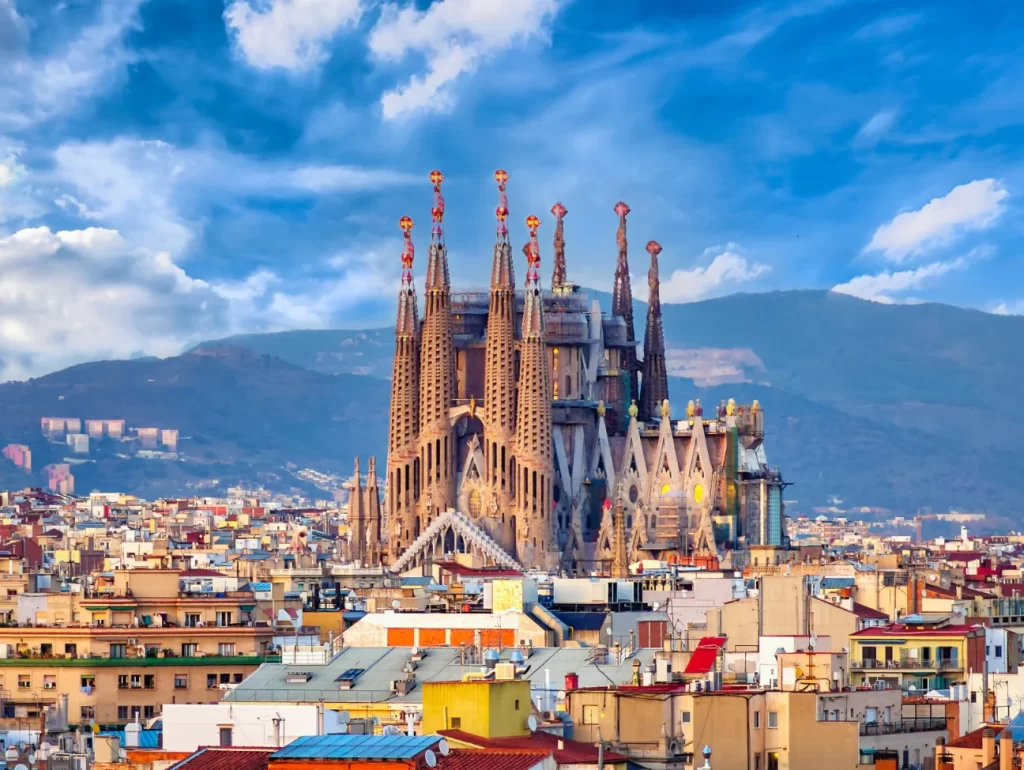
Gaudí was inspired by the influence of nature and organic forms when he designed La Sagrada Familia. The church is characterized by its soaring spires, intricate stained glass windows and façade decorated with natural motifs. Gaudí used the mathematical principles and geometric shapes of nature to achieve symmetry, balance and harmony in the design of the church.
One of the most distinctive features of La Sagrada Familia is its towering spires. These towers form the church’s striking silhouette and have become one of Barcelona’s landmarks. The different heights and decorations of the towers represent different parts of the church and tell religious stories.
Interior of La Sagrada Familia
Gaudí’s innovative design approach is reflected in the interior of La Sagrada Familia. Large stained glass windows, set between the church’s grand and high ceilings, columns and arches, allow natural light to flood in. The colored glass gives the interior an eye-catching sparkle and color, while allowing natural light to change the atmosphere of the space.
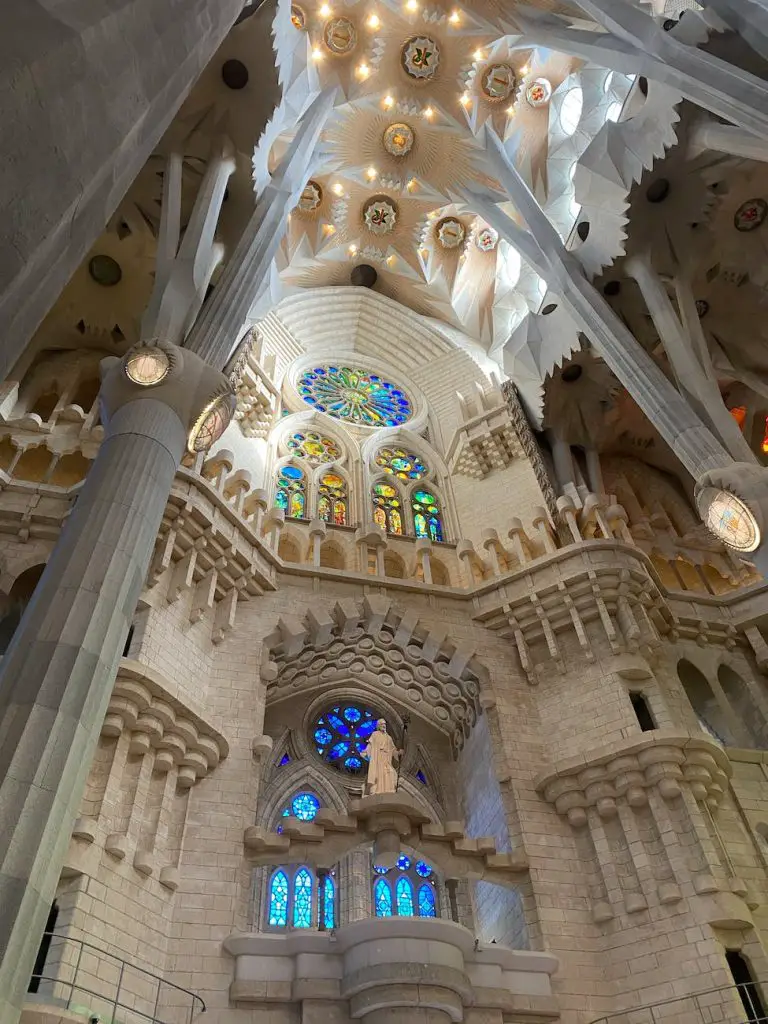
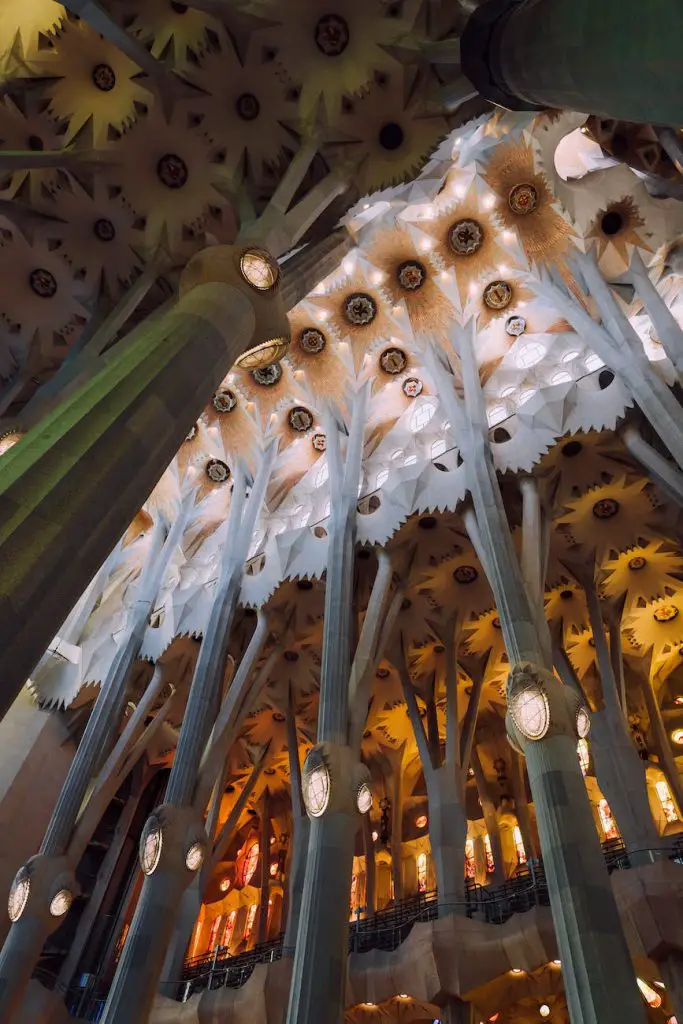

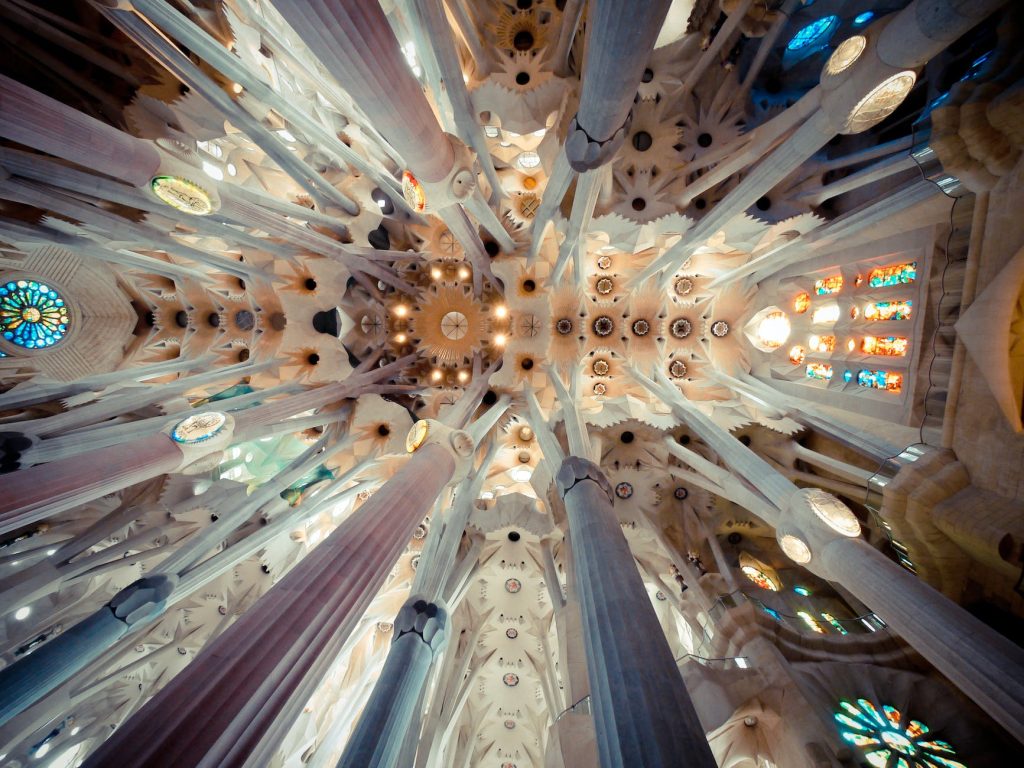

Gaudí used the bivalve system, one of the architectural principles he introduced when designing the building, to strengthen the structure and shape the interior at the same time. This system allowed the church to have an organic interior supported by columns and arches.
Architecture of La Sagrada Familia
La Sagrada Familia is an inspiring example of the future of architecture, as Gaudí’s forward-thinking design brought a new perspective to architecture. Inspired by the organic forms of nature, the church offers a different approach to traditional church architecture. Using natural geometry, Gaudí combined construction techniques and advanced technologies to create a unique and complex structure. Advanced techniques such as complex calculation and modeling methods, computer-aided design and manufacturing processes, 3D printers and robotic systems were used in the later stages of the church’s construction.
Another feature of Gaudí’s design, combined with advanced techniques, is the details. While the ornaments on the exterior of the church are inspired by natural forms and religious symbols, advanced technologies were used in the production and installation of these ornaments. 3D printers and robotic systems played a major role in the production and assembly of the church’s detailed ornamentation. This allowed the complex and fine workmanship of the exterior of the church to be realized more precisely and quickly than with traditional methods.
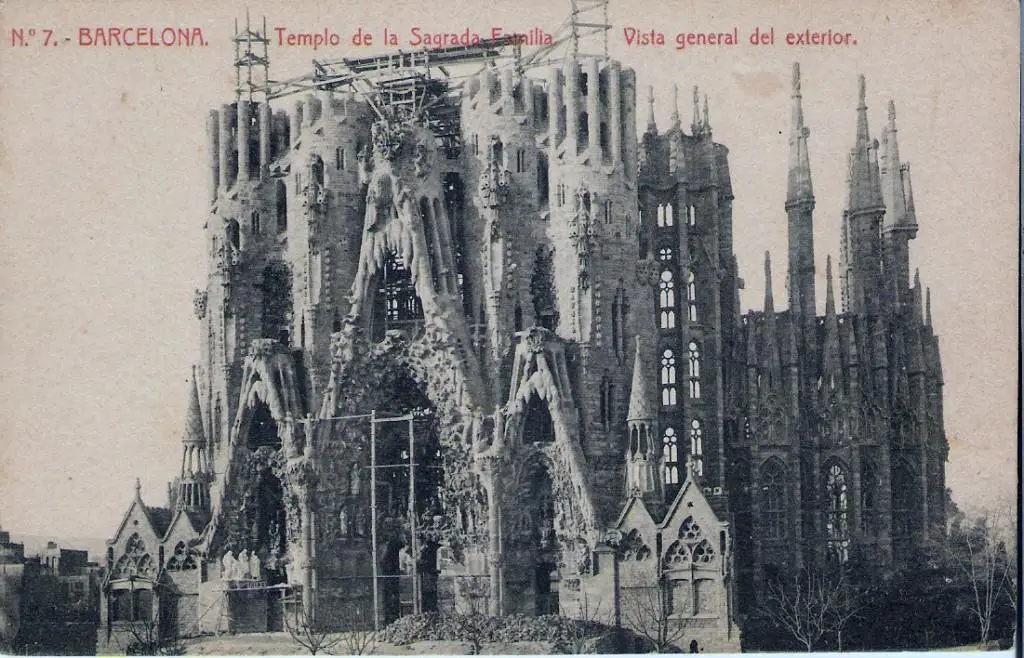
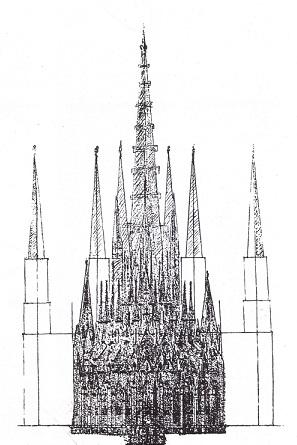
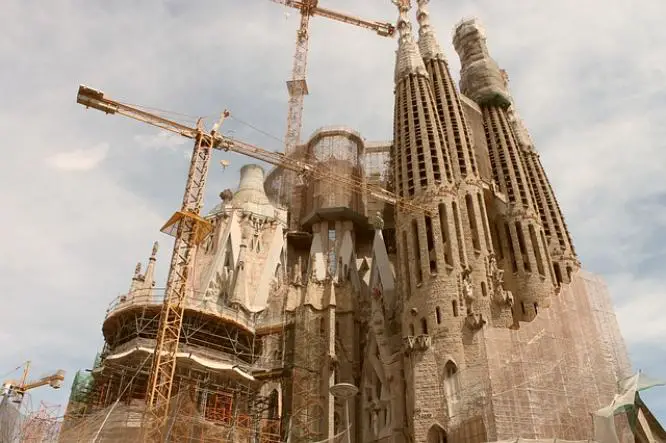
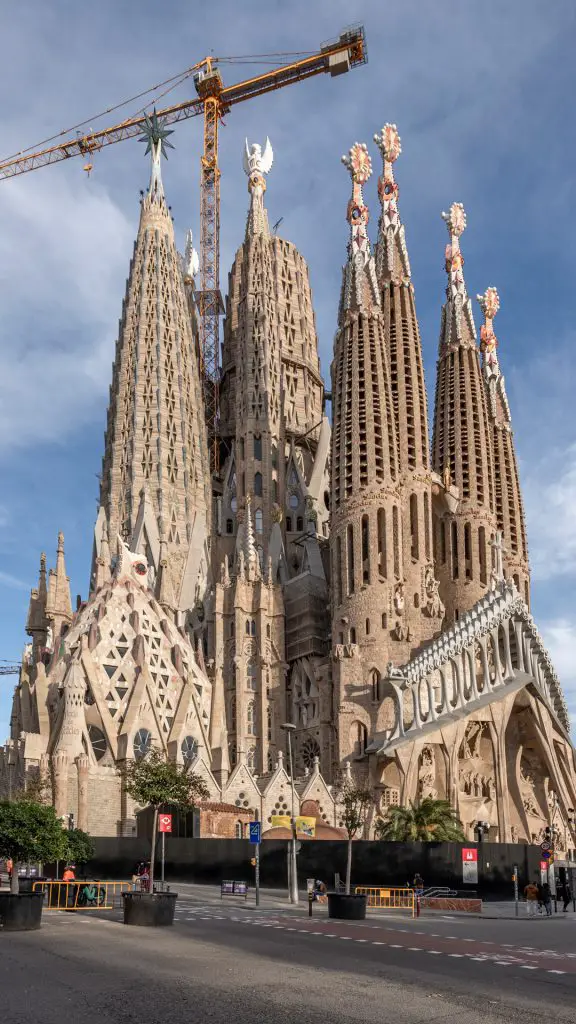
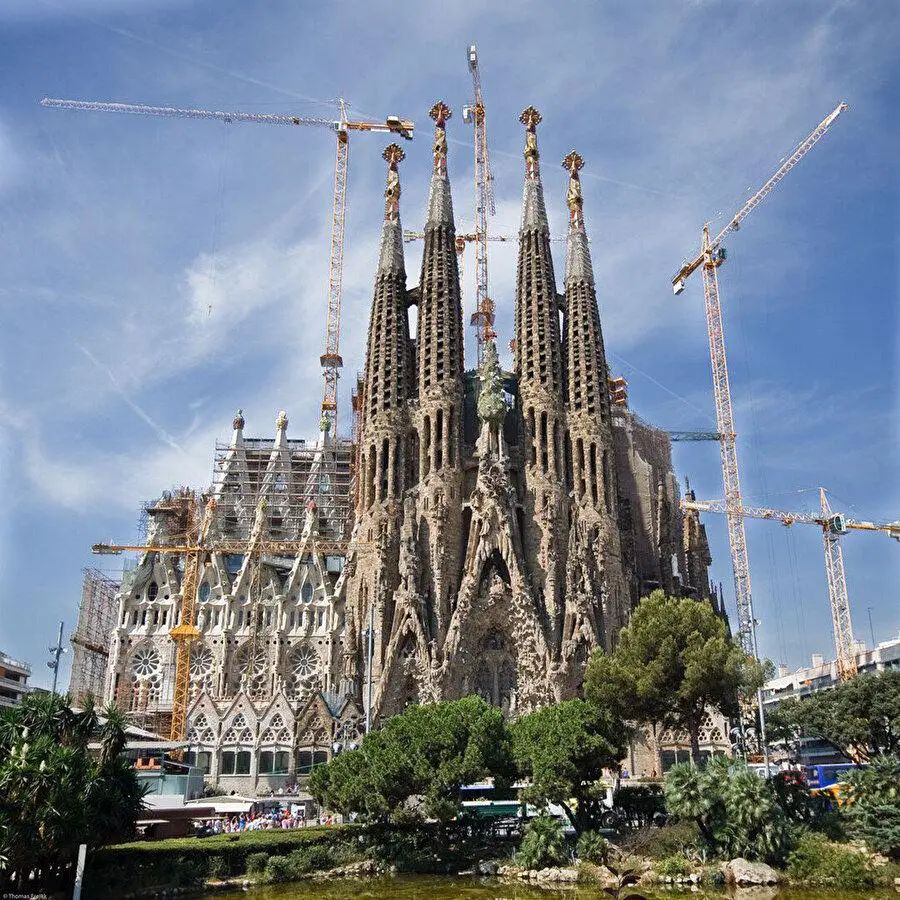

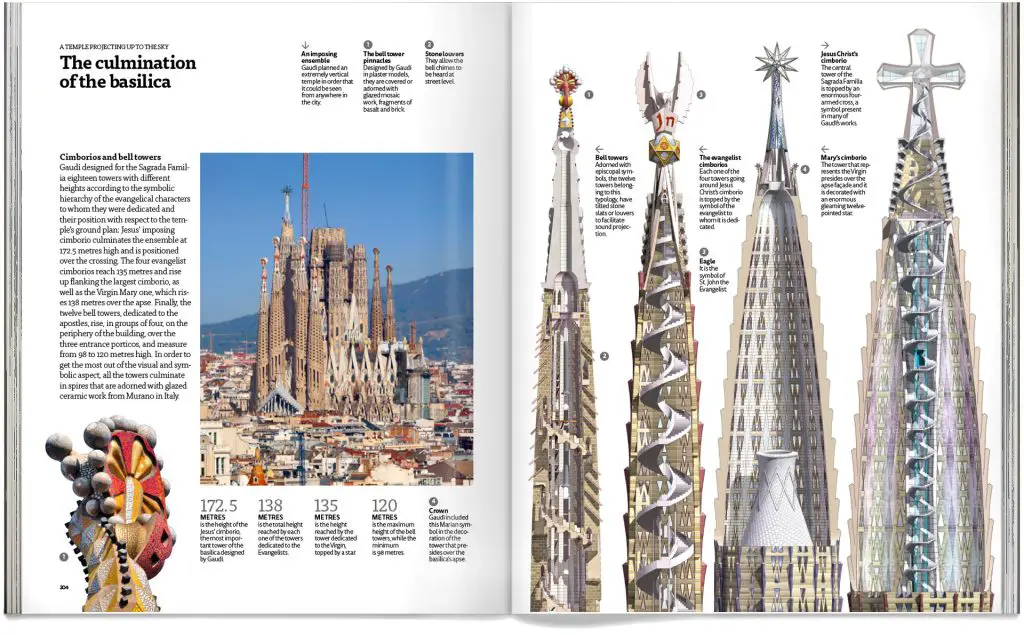
The design and construction of La Sagrada Familia was an inspiring example in the field of architecture. Gaudí’s advanced techniques and innovative design approach inspired architects for future projects. The church is an example of synthesizing traditional church architecture with natural forms and using advanced technologies to combine aesthetics and durability. At the same time, the fact that La Sagrada Familia is still unfinished allows new techniques and approaches to be constantly explored and applied. This contributes to expanding the artificial boundaries of the future of architecture.
Gaudí’s innovative design approach has a great impact on the interior of the church. High ceilings and large stained glass windows between the columns and arches allow natural light to flood the interior in a mesmerizing way. The colored glass refracts the light, adding a visual richness to the interior. This changes the atmosphere of the church, offering visitors an unforgettable experience.
Gaudí’s idea of strengthening the structure using a bivalve system also plays a major role in shaping the interior of the church. This system creates spaces and spaces between the columns and arches, while at the same time increasing the durability of the church. This gives the interior a spacious and expansive atmosphere. Visitors to the building experience the organic and fluid design of the church, while at the same time feeling themselves in a fascinating interior.
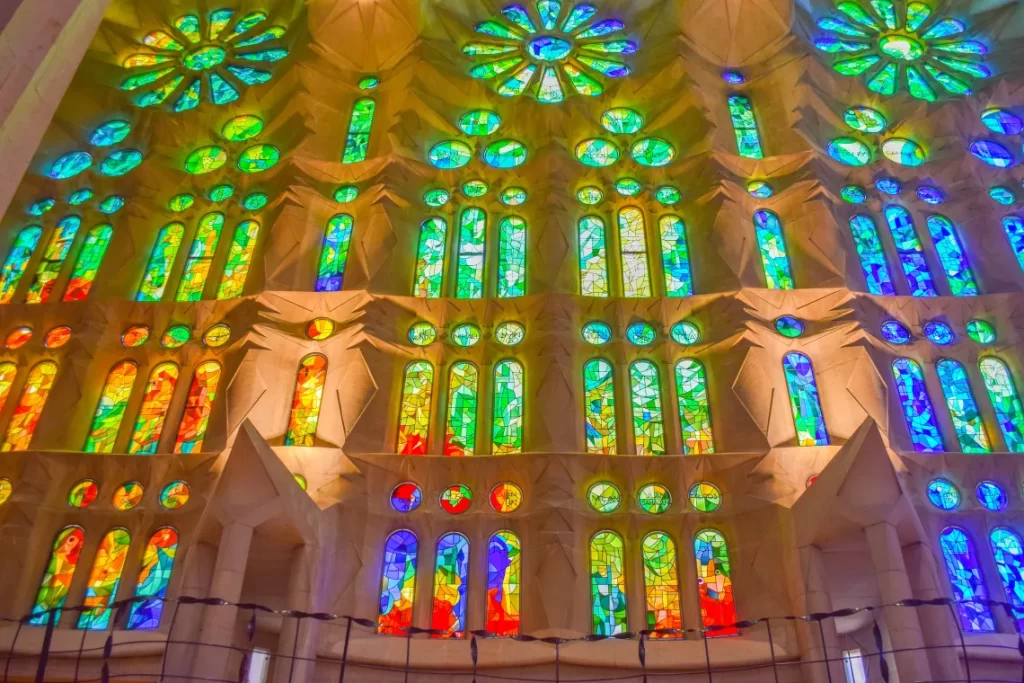

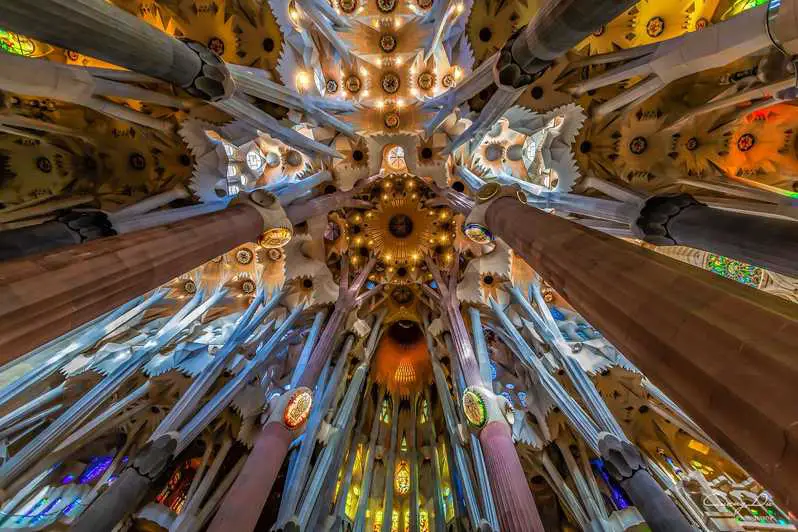
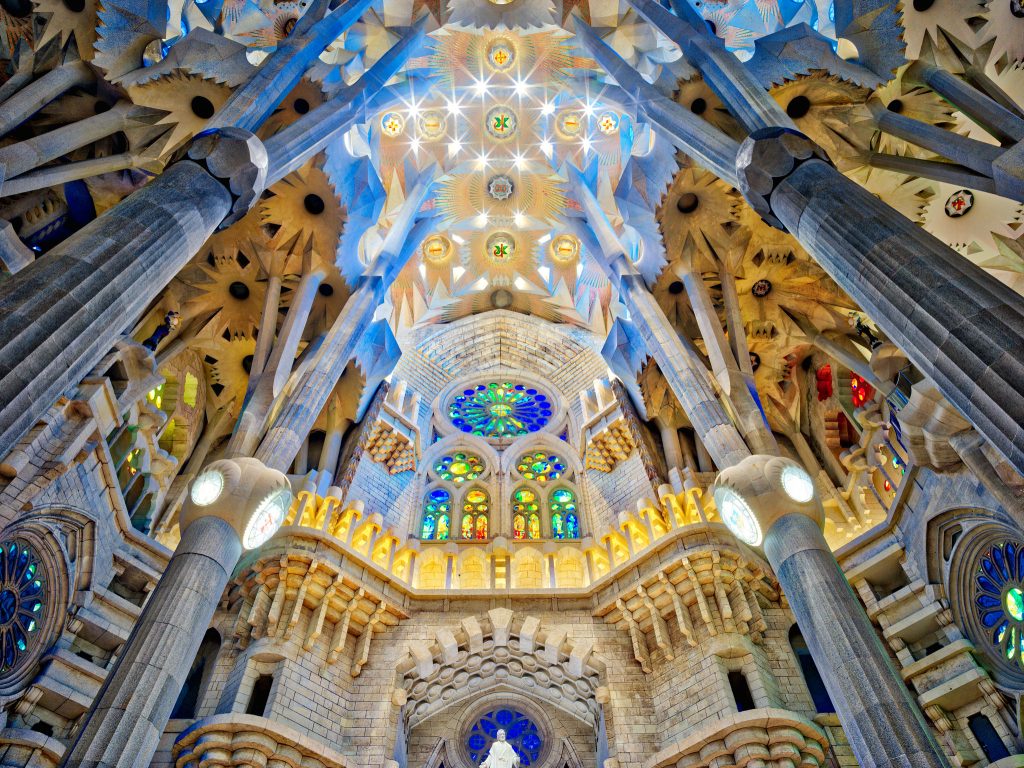
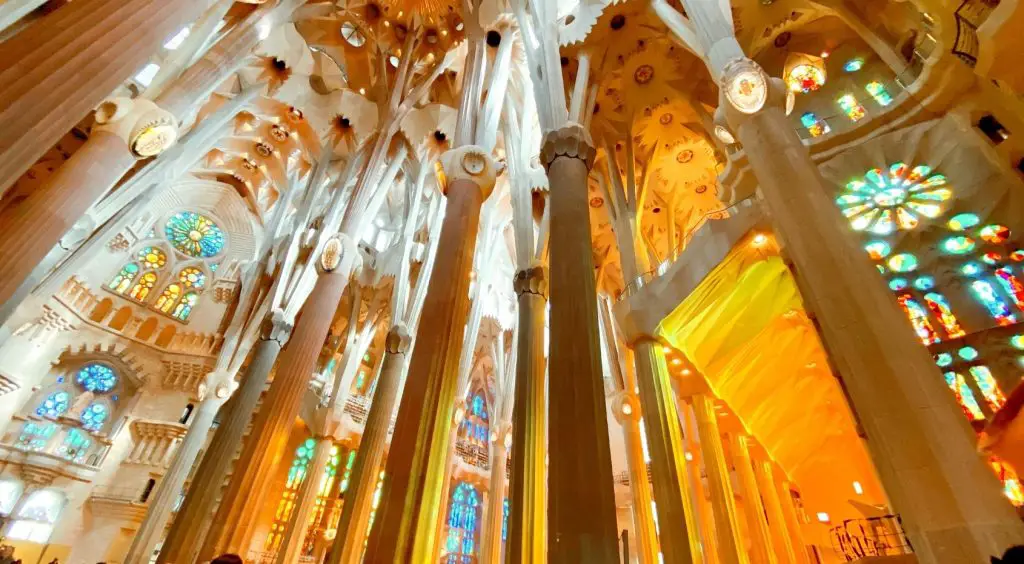
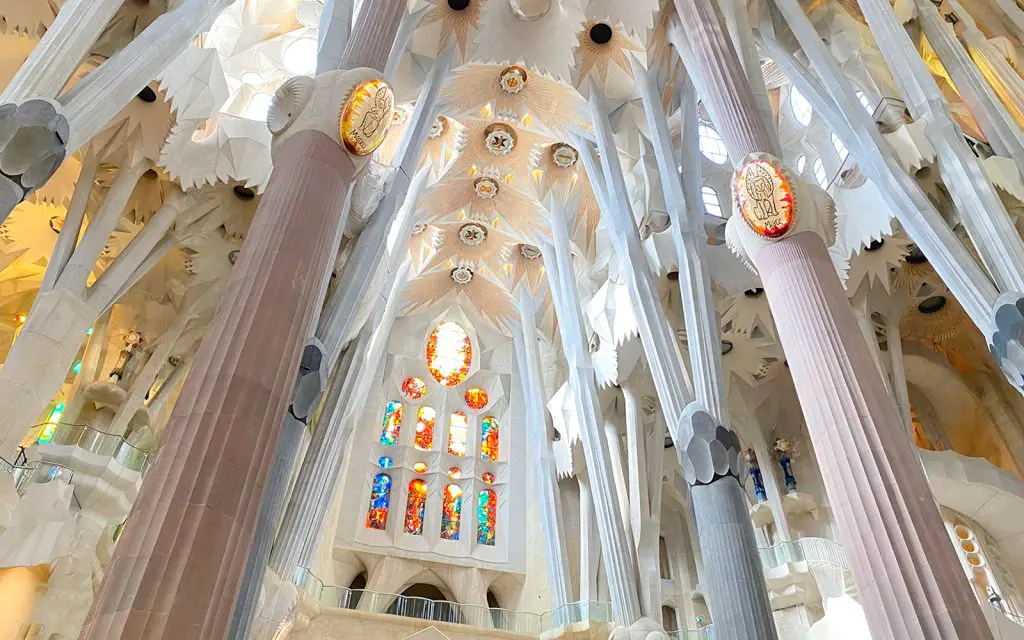



Gaudí’s design aims to achieve a combination of structural strength and aesthetics with the advanced techniques used in the construction process. The double-shell system of the church strengthens the structure and creates a spacious and airy atmosphere in the interior. At the same time, the placement and angles of the stained glass windows are carefully calculated to ensure the optimal diffusion of natural light into the interior. Thus, the church offers an impressive visual experience created by natural light.
Another feature that Gaudí combined with advanced techniques is the details. While the decorations on the exterior of the church are inspired by natural forms and religious symbols, advanced technologies were used in their production and installation. 3D printers and robotic systems played a major role in the production and assembly of the church’s detailed ornamentation. This allowed the complex and fine workmanship of the church’s exterior to be realized more precisely and quickly than with traditional methods.
The design and construction of La Sagrada Familia has become an inspiring example in the field of architecture. Gaudí’s advanced techniques and innovative design approach have inspired architects in their future projects. The church is an example of pushing the boundaries of traditional church architecture, synthesizing natural forms and using advanced technologies to combine aesthetics and durability. At the same time, the fact that La Sagrada Familia is still unfinished allows new techniques and approaches to be constantly explored and applied, thus expanding the boundaries of the future of architecture.
Antoni Gaudí’s Design and Start History
La Sagrada Familia was designed by the famous Spanish architect Antoni Gaudí. Gaudí started working on the project in 1882 and was involved in its construction for the rest of his life. Gaudí’s design represents a unique fusion of Gothic and modernism styles. La Sagrada Familia is a masterpiece that reflects Gaudí’s architectural vision and organic sense of design.
Construction Phases and Delays
The construction process of La Sagrada Familia is very detailed and complex. Although the construction of the building started in 1882, it is still not completed. The construction process progressed in phases and different sections were completed in different periods. However, the construction process was delayed due to financing, technical difficulties and many other obstacles.

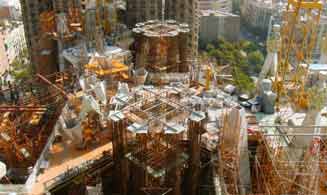



Changes Following Gaudí’s Death
After Antoni Gaudí died in a tram accident in 1926, the construction of La Sagrada Familia was not completed. Gaudí’s death led to a number of changes to the building. Other architects and artists have tried to continue Gaudí’s vision and have remained faithful to his designs.
Gaudí’s Architectural Approach
Antoni Gaudí was an architect who was inspired by nature and adopted an organic design approach. He used this approach extensively in La Sagrada Familia. The symbols and motifs used in the building reflect Gaudí’s desire to represent the harmony between nature and man-made. Moreover, in La Sagrada Familia, modernism and Gothic elements come together to create a unique aesthetic.
Inspired by Nature and Organic Design
Antoni Gaudí is an important figure in the history of Spanish architecture and his architectural approach is heavily inspired by nature. Gaudí’s most distinctive characteristic is his organic design approach. While trying to imitate the forms and structures of nature, he uses organic lines, curves and textures in his architectural projects. Gaudí’s approach ensures that his buildings are in harmony with the natural environment and reflect the beauty of nature.
Gaudí’s organic design approach can be clearly seen in La Sagrada Familia and other important works. These buildings have unusual and complex shapes reminiscent of plant and animal forms. Gaudí used the geometry and mathematical principles of nature to give his buildings a unique aesthetic.
Symbols and Motifs Used in La Sagrada Familia
One of Gaudí’s most famous works, La Sagrada Familia is a church full of symbols and motifs. Gaudí used religious symbols and figures to give this building a deeper meaning.
One of the most striking symbols in La Sagrada Familia is the cross. The cross is one of the most important symbols of Christianity and reflects Gaudí’s religious beliefs. Other symbols often used in Gaudí’s designs include angels, fruit trees, and figures taken from scripture. These symbols add depth and meaning to the building, giving visitors an emotional experience.
As for Gaudí’s motifs, they are inspired by various elements of nature. Vegetation, shells, animal forms and geometric patterns are frequently used in the decoration of the buildings. These motifs stand out on the exteriors and interiors of the buildings and reflect Gaudí’s organic design approach.
Combination of Modernism and Gothic Elements
Gaudí’s architectural approach is characterized by a combination of modernism and gothic elements. Although Gaudí was one of the pioneers of the modernism movement, he did not hesitate to use traditional elements of gothic architecture.
This combination is clearly visible in La Sagrada Familia. Tall towers, typical of Gothic architecture, are combined with modernism in this building. At the same time, arches and columns similar to the arches of Gothic cathedrals are often used in Gaudí’s designs. This combination reveals that Gaudí’s buildings have a distinctive style and aesthetic.
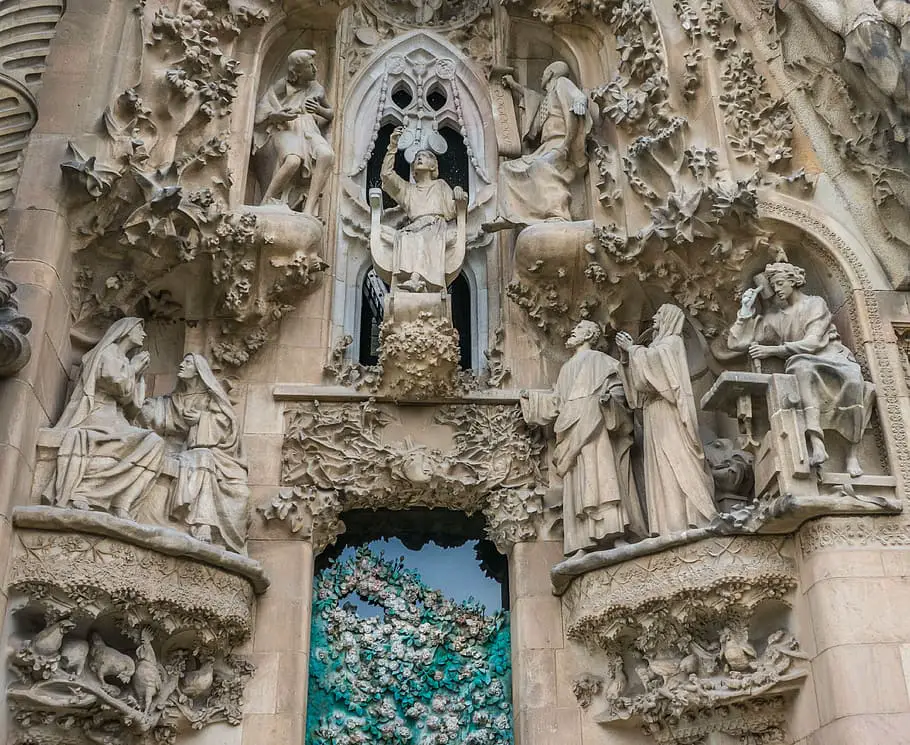
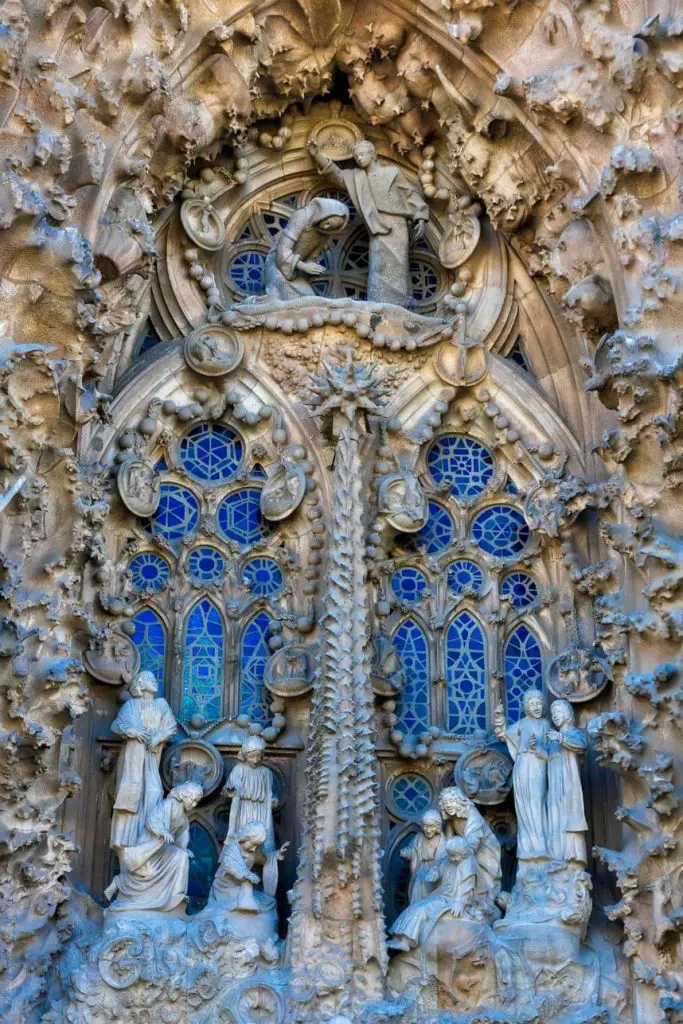

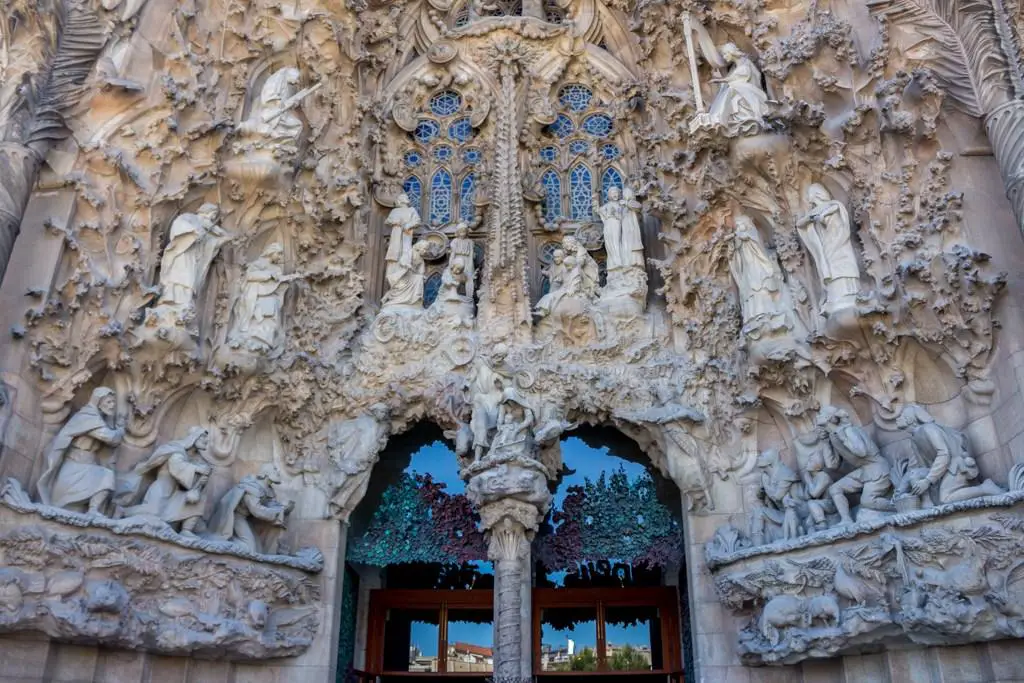
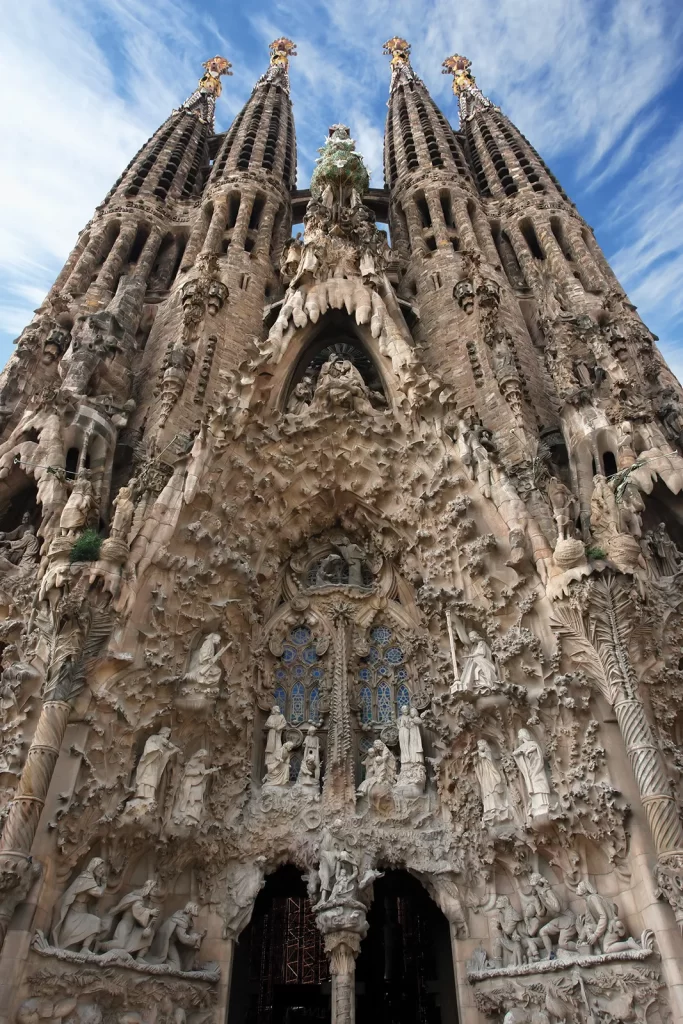
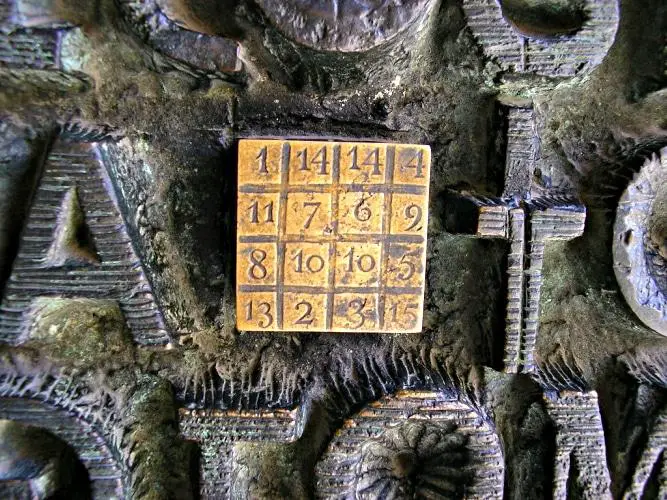
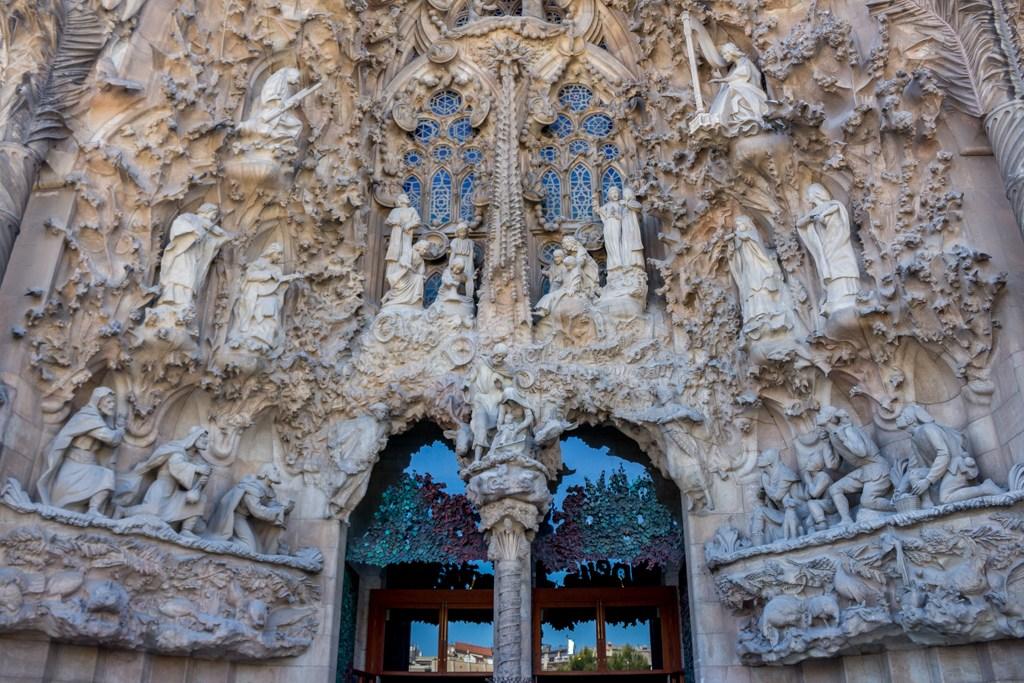
Gaudí’s architectural approach is characterized by being inspired by nature, full of symbols and motifs, and combining modernism and gothic elements. This approach makes Gaudí’s work unique and recognizable. Buildings such as La Sagrada Familia are the most important examples of Gaudí’s architectural legacy and are still of great interest today. Gaudí’s architectural approach aims to strike a balance between nature and man-made structures, providing an aesthetic and emotional experience.
Technological Innovations in Architecture
During the construction process of La Sagrada Familia, technological innovations beyond the period were used. Gaudí realized his design by resorting to advanced technologies of his time. In particular, architectural simulation and computational techniques played an important role in Gaudí’s design process. These technologies were used to make calculations of complex structures and to optimize the structure.
1. Computer Aided Design (CAD)
CAD technology played a major role in the construction process of La Sagrada Familia. Computer-aided design allows architects to create more precise and complex designs. Gaudí’s design approaches, ahead of their time, were fully realized thanks to CAD technology.
2. Building Information Modeling (BIM)
Building information modeling is another important technology used in the design and construction process of complex buildings such as La Sagrada Familia. BIM allows architects, engineers and other stakeholders to better manage the design and construction process. With this technology, a detailed digital model of the components and systems in the building can be created and the progress of the project can be tracked.
Gaudí’s Design Approaches Beyond His Time
With buildings such as La Sagrada Familia, Antoni Gaudí adopted a design approach beyond his time in the history of architecture. Here are some of Gaudí’s design approaches beyond his period:
1. Organic and Natural Forms
Gaudí’s designs are inspired by the organic and natural forms of nature. In buildings such as La Sagrada Familia, the forms and patterns of the plant and animal world are often found. This organic approach gave the buildings a unique and impressive appearance.
2. Structural Innovations
Gaudí made a difference in the world of architecture with structural innovations. The unique design of the towers used in La Sagrada Familia and the inclined support systems used to stabilize the building are examples of this. These structural innovations, ahead of Gaudí’s time, are recognized as a remarkable advance in the field of architecture.
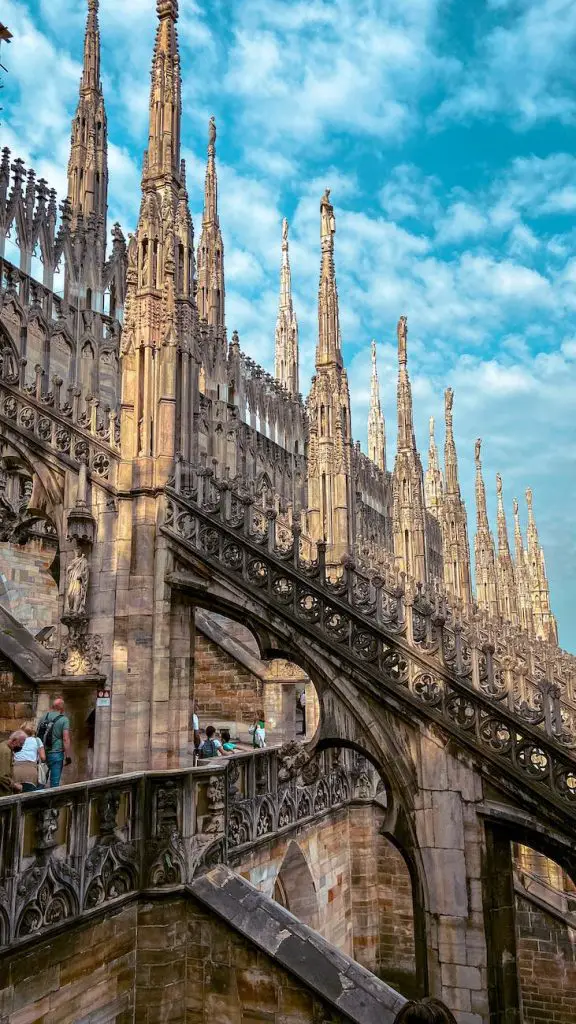
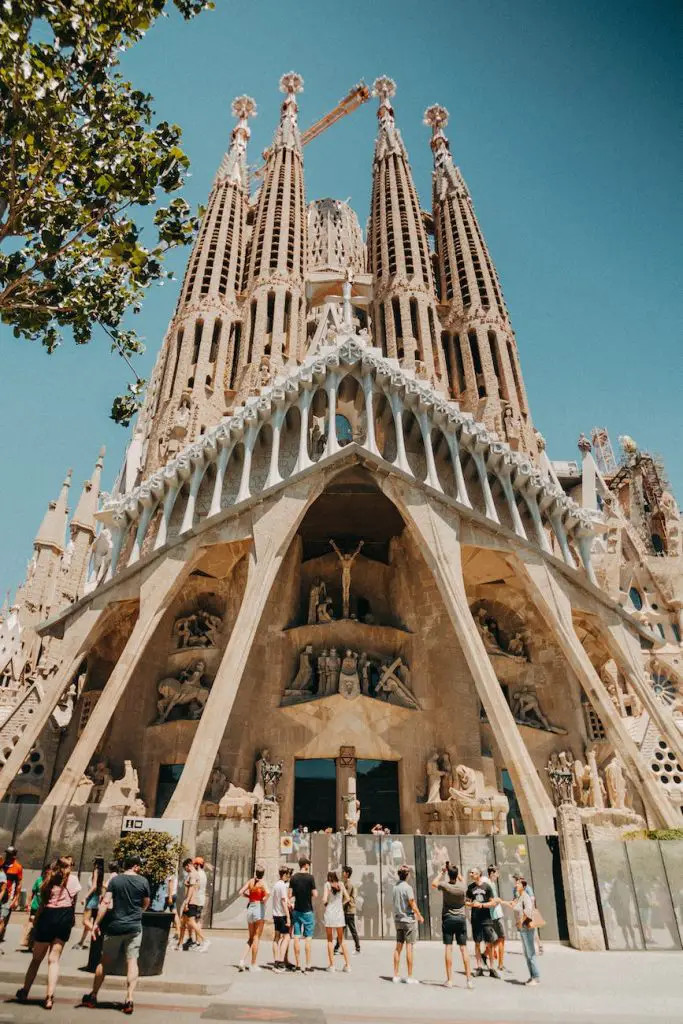
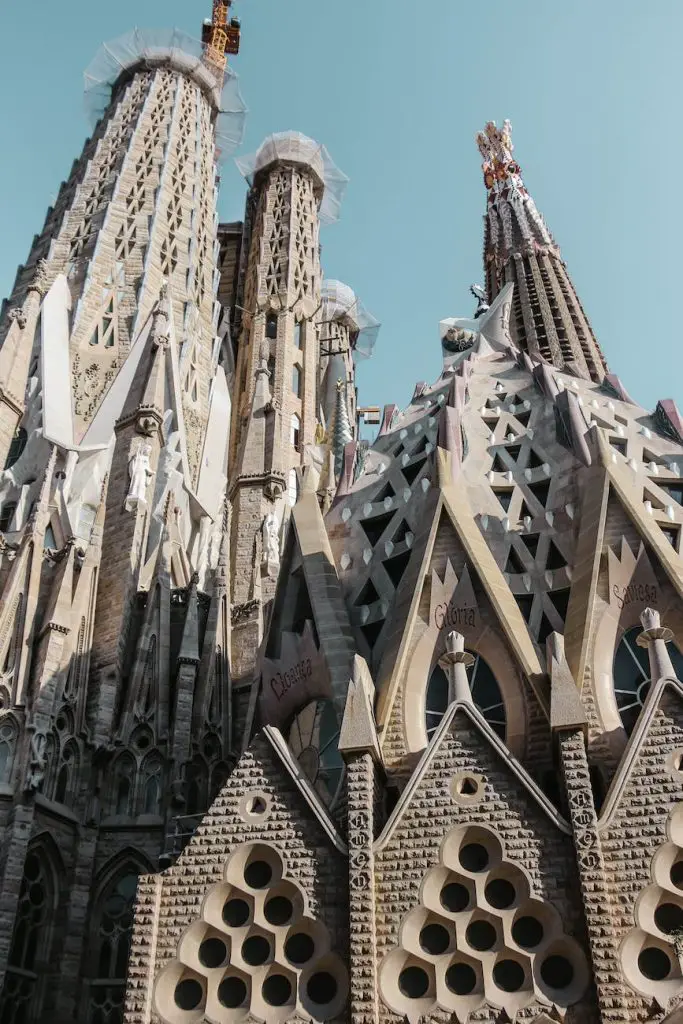
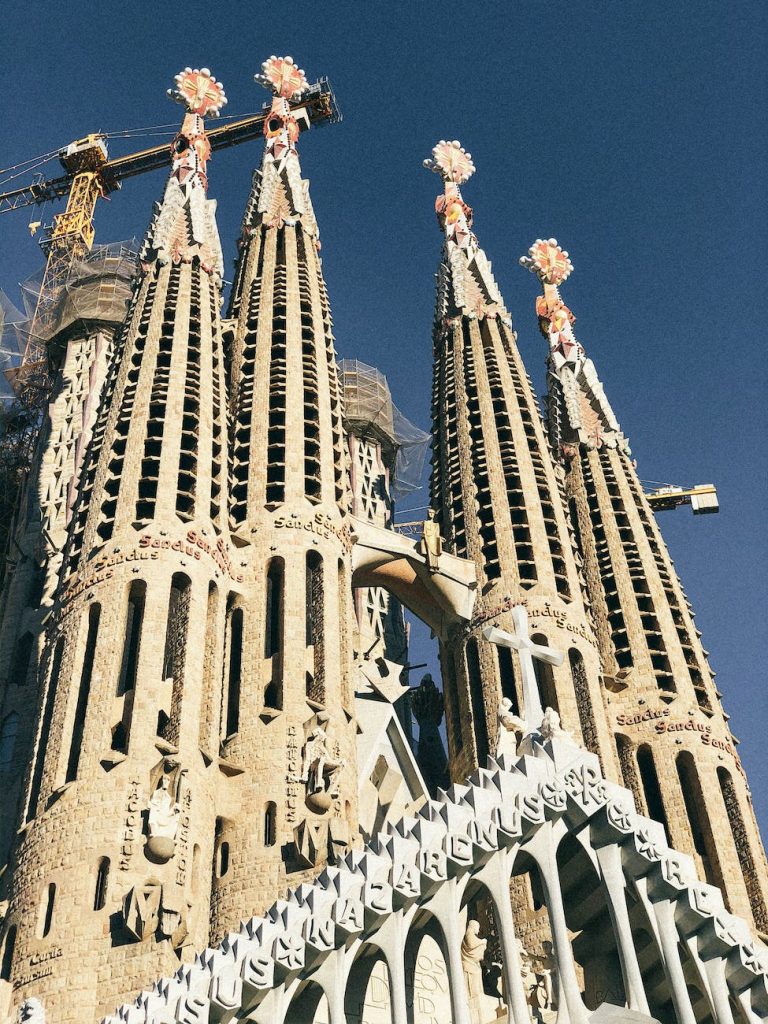
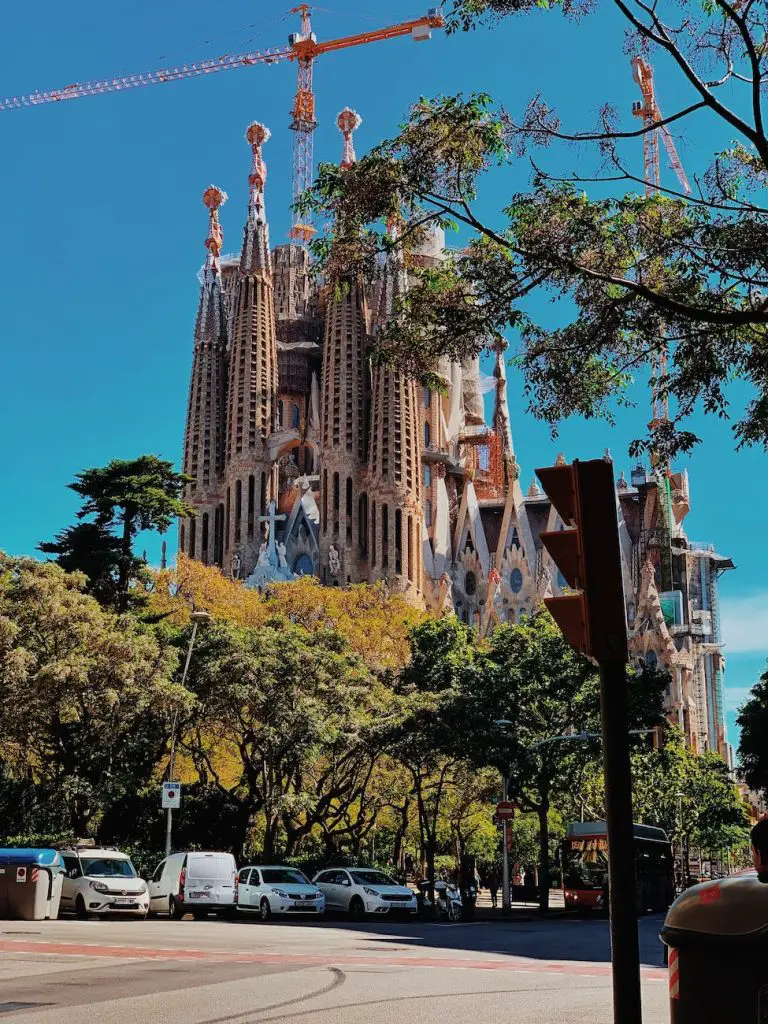
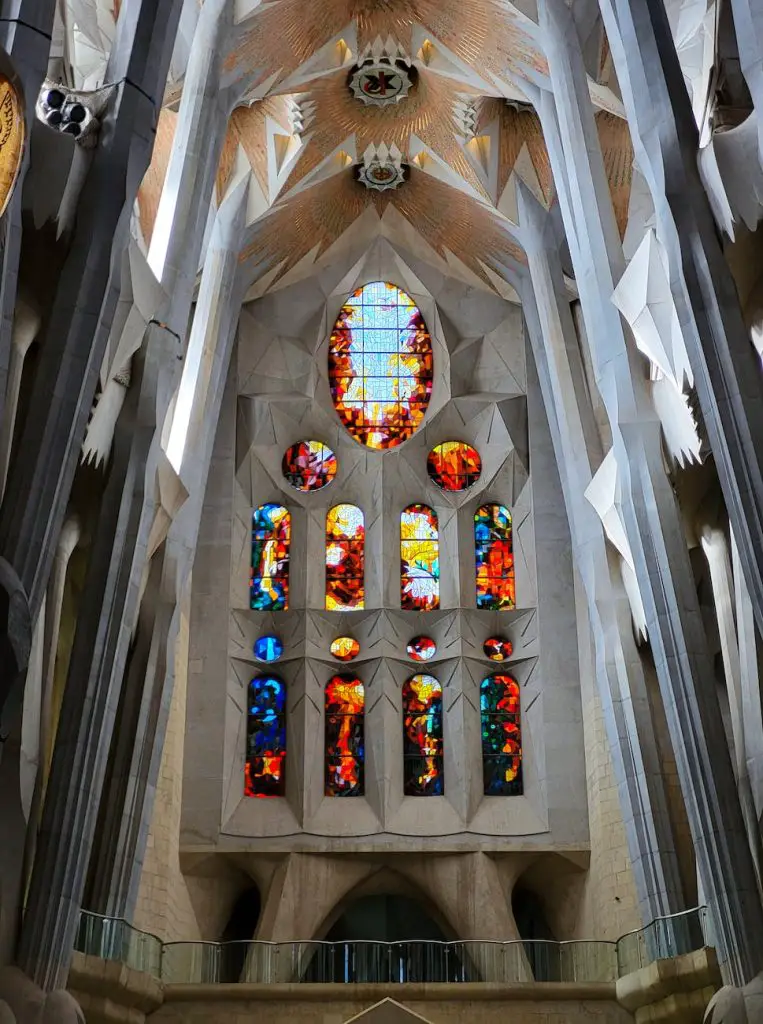
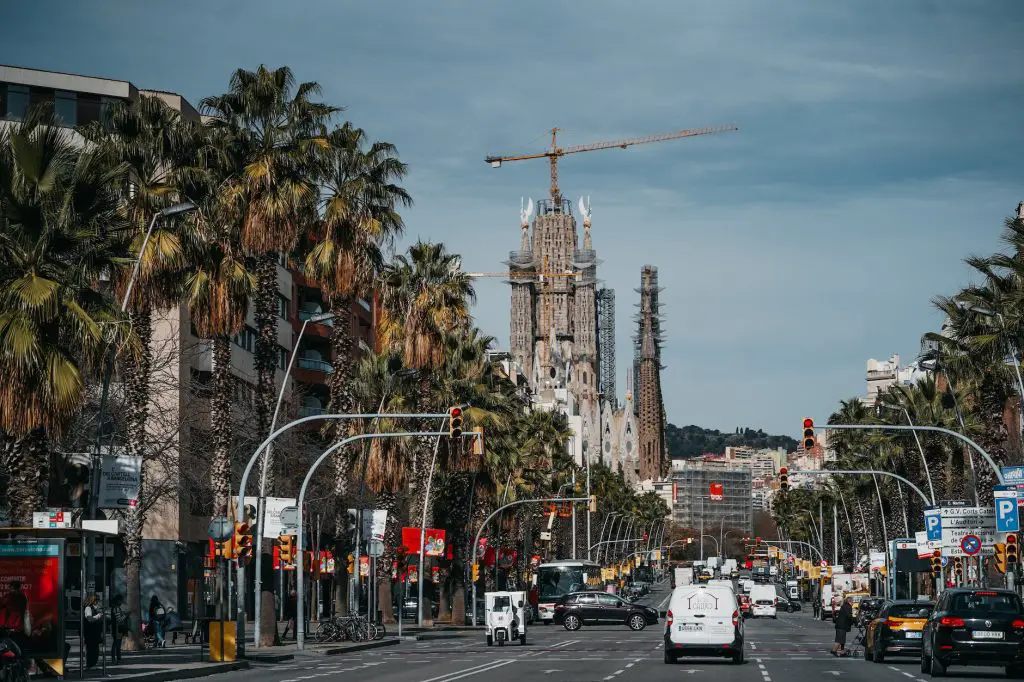
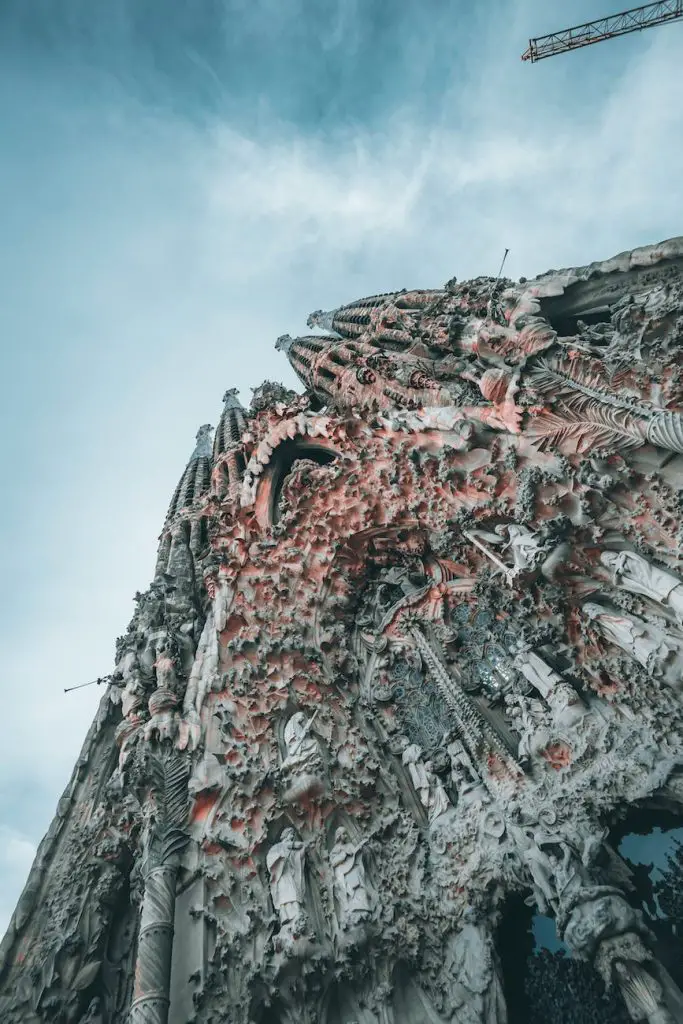
The Impact of La Sagrada Familia on Technological Innovations
La Sagrada Familia is an important example of how technological innovations can have an impact on architecture. This building has enabled more complex designs to be realized through the use of new technologies. In addition, architectural simulation and computational techniques were used to design the building in a more durable, energy efficient and sustainable way.
La Sagrada Familia’s influence on technological innovations has also contributed to the creation of a new vision in the field of architecture. It inspired future architectural projects and encouraged greater use of technological innovations.
Social and Cultural Impact of La Sagrada Familia
La Sagrada Familia has become a symbol of Barcelona and a major tourist attraction. When completed, the building is expected to become a world-class tourist attraction. Moreover, La Sagrada Familia keeps Antoni Gaudí’s legacy alive and promotes his impressive architectural approach worldwide.
Barcelona’s Symbol and Tourist Attraction
La Sagrada Familia is one of Barcelona’s most recognizable landmarks and a major tourist attraction of the city. Over the years, this iconic building has become a must-visit attraction for locals and tourists alike. La Sagrada Familia is instantly recognizable by its striking and unique image on the city skyline.


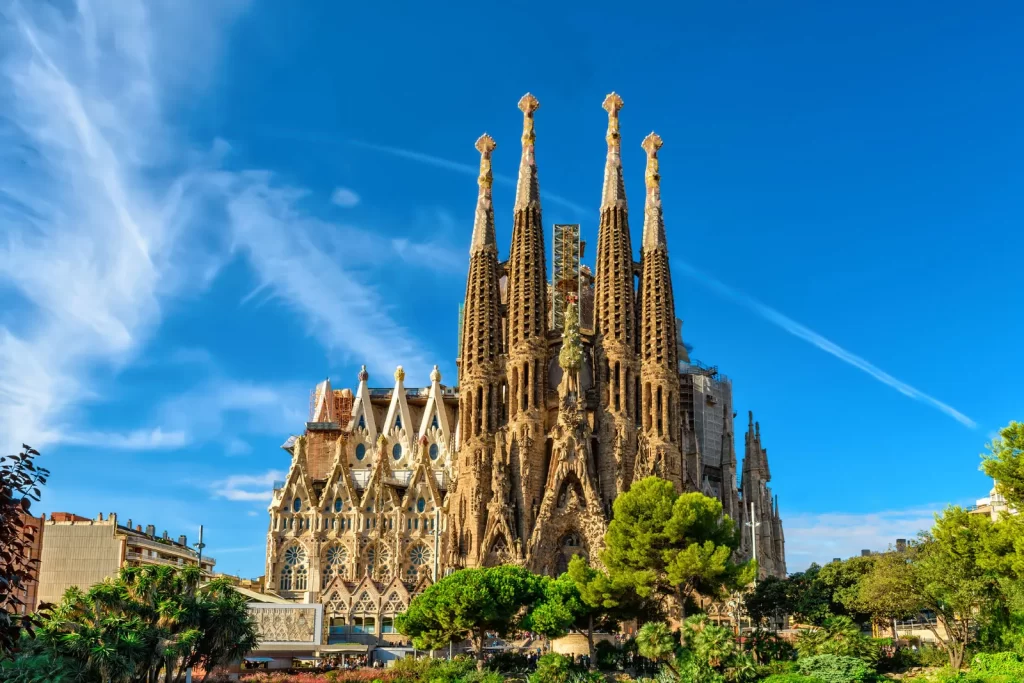


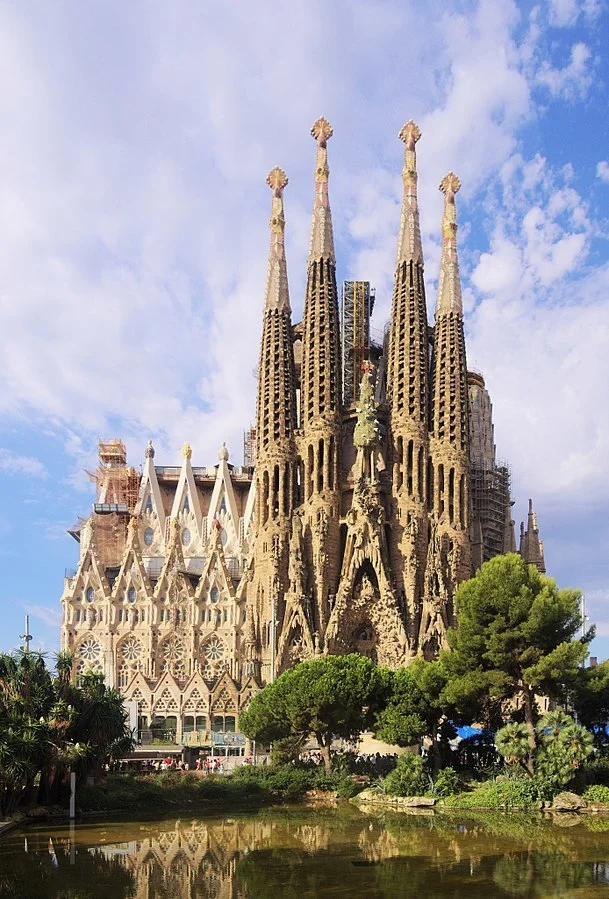
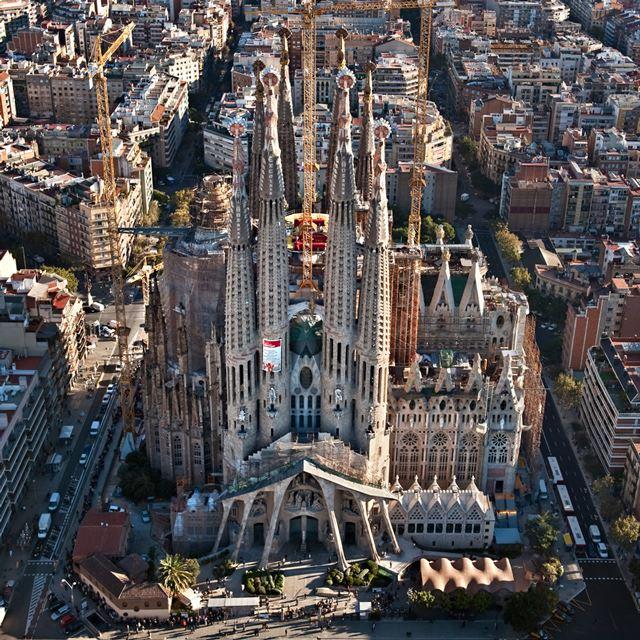

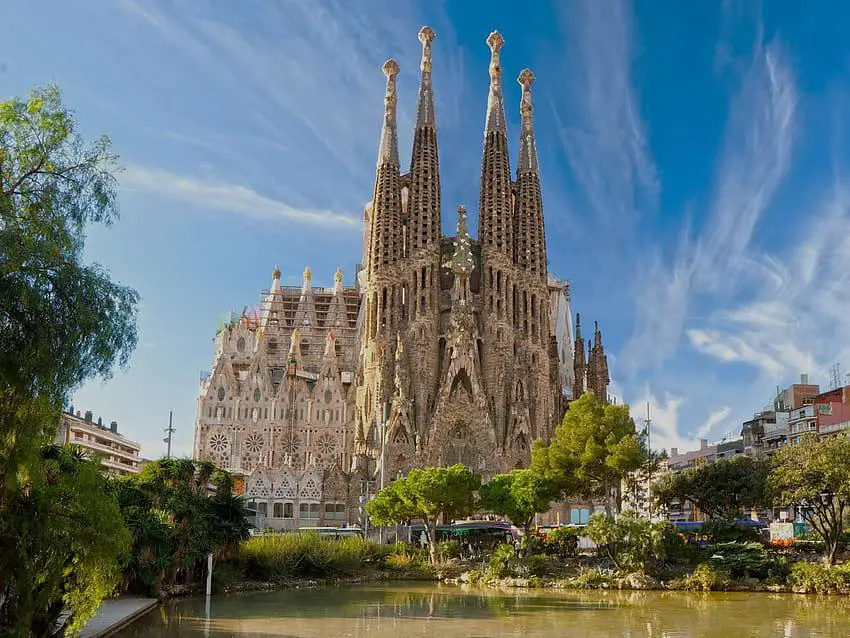

Use for Religious and Cultural Events
La Sagrada Familia is an important venue for religious and cultural events. Since the day it was built, it has served as a church. Various religious events such as religious services, weddings, baptisms and funerals are held here. It also hosts different cultural events, including concerts, exhibitions and artistic performances.
Impact on the World of Art and Architecture
La Sagrada Familia is recognized as a great architectural achievement and has had a profound impact on artistic and architectural fields around the world. Reflecting the unique style of Antoni Gaudí, it is a unique fusion of modernism and gothic style. The exterior of the cathedral is decorated with intricate geometric patterns, sculptures and decorative elements.
From an architectural point of view, the construction and design of La Sagrada Familia is considered a landmark in terms of construction techniques and structural engineering. Since its construction is still ongoing, it is being developed and advanced using new technologies and construction methods.
From an artistic point of view, La Sagrada Familia is recognized as an expression of Gaudí’s creativity. The interior of the building is remarkable for its colorful stained glass windows, unique columns and organic patterns. These artistic details offer visitors a fascinating experience and are a center of attraction for art lovers.
The Ongoing Adventure of Construction
Current Construction Progress and Targeted Completion Date
La Sagrada Familia is one of the most recognizable and special buildings in Barcelona. Designed by Gaudi, this religious building stands out for its combination of modernism and gothic style. However, the construction process has a long history and is still ongoing.
Today, La Sagrada Familia is still under construction. The construction process is slow, as attention to detail is required, given the complexity of the original design and the goal to perfectly fit the structure. In addition, limited funding sources and donations have also delayed construction.
Today, the target date for completion is 2026. This date coincides with the 100th anniversary of Antoni Gaudi’s death. However, due to the complexity of the construction process and unexpected challenges, this date is far from certain.
Challenges of a project sustained by funding and donations
The construction of La Sagrada Familia is largely financed by donations and contributions from tourists. However, there are many challenges associated with maintaining and completing this project.
Due to the complexity of the construction and the unique design, the costs are quite high. Financing has therefore been difficult to secure. Donations and tourism revenues play an important role to keep the project going, but they are not enough. Therefore, there are other sources for financing the project.
Another challenge is to remain faithful to the original design and bring Gaudi’s vision to life. This is a factor that lengthens the construction process and increases costs. The complex geometry and details of the structure require skillful craftsmanship and care.
Potential Impacts of La Sagrada Familia when completed
When completed, La Sagrada Familia is expected to bring many potential impacts. These impacts will be significant both culturally and in terms of tourism.
The completion of La Sagrada Familia will make it a Barcelona landmark. Already a landmark today, its completion is expected to increase the city’s tourist appeal and help it attract more visitors. The tourism sector will benefit greatly from the revenue generated from tourists visiting the building.
Also, when completed, La Sagrada Familia will have a major impact on the world of architecture. Antoni Gaudi’s unique design and the complexity of the construction will be a source of inspiration for architects and artists. It will inspire artistic and architectural innovation and influence the design of future projects.
Synthesis of Art and Religion
Design of the Sacred Space
La Sagrada Familia is a cathedral designed by Antoni Gaudí that has become a symbol of Barcelona. This magnificent building is full of religious symbols and meanings. Gaudí’s design carefully reflects the basic concepts and symbols of the Christian faith.













Meanings of the Towers
One of the most striking features of La Sagrada Familia is its tall towers. These towers carry religious meanings. There are four towers representing the four biblical authors mentioned in the Bible. There is also the Tower of Mercy, the highest tower, which represents the Virgin Mary.
Symbolism of Geometric Forms
In the design of La Sagrada Familia, geometric forms also have symbolic meanings. Triangles represent the Holy Trinity, while circles signify infinity and unity. By combining these symbolic meanings in a religious and artistic synthesis, Gaudí aimed to offer visitors both an aesthetic and spiritual experience.
Aesthetic and Spiritual Emotions Experienced by Visitors
Fascinating Architecture
The mesmerizing architecture of La Sagrada Familia inspires deep admiration in visitors. The intricate craftsmanship and extraordinary details on the exterior of the building offer visitors a visual feast. The interior creates an enchanting atmosphere with its high ceilings, colorful stained glass windows and elegant decorations.
Plays of Light and Color
In the interior of La Sagrada Familia, the play of light and color offers a mesmerizing experience. Gaudí allowed sunlight to penetrate through the elaborate stained glass windows and openings in the high ceilings. This play of light illuminates the space in an extraordinary way and creates colorful reflections. The aim is for visitors to have an impressive spiritual experience through the play of light and color.
Peace and Spiritual Depth
The atmosphere of La Sagrada Familia gives visitors a sense of peace and spiritual depth. The high ceilings, the silence and the space decorated with religious symbols allow visitors to embark on an inner journey. In this sacred space, people can find inner serenity through a religious experience.
Combination of Religious and Artistic Expression
Gaudí’s Creative Vision
Antoni Gaudí’s vision in designing La Sagrada Familia represents a fusion of religious and artistic expression. Gaudí believed that architecture and art could offer a religious experience. Therefore, when designing La Sagrada Familia, he aimed to express religious symbols and meanings in an aesthetic and artistic way.
Visualization of Religious Beliefs
La Sagrada Familia is a unique setting for the visualization of religious beliefs. Gaudí’s design incorporates key events and figures that are fundamental concepts of the Christian faith, such as the birth, crucifixion and resurrection of Jesus and the life of the Virgin Mary. These figures are expressed through different art forms such as sculptures, ornaments and stained glass windows.
Art’s Contribution to Religious Understanding
The art of La Sagrada Familia reinforces religious meaning and allows visitors to experience religious stories and messages in a deeper way. The colorful patterns and figures in the stained glass windows tell religious stories and create an impressive atmosphere through the play of light. The sculptures and ornaments concretely represent religious figures and symbols.
Other works and legacy of Antoni Gaudí
Antoni Gaudí is a Spanish architect recognized and admired around the world. Gaudí’s most famous work, La Sagrada Familia, is only part of his legacy. But Gaudí’s other works have also had a profound influence on modern architecture.
Other important works by Gaudí include the Park Güell, Casa Batlló and Casa Milà in Barcelona. These buildings are examples of Gaudí’s unique architectural style and creativity. Each building is characterized by organic forms, colorful ceramics and the use of natural elements.










Gaudí’s legacy has had a great influence not only on architecture, but also on artistic and aesthetic values. His works have inspired many artists beyond his time.
Influence and Inspiration on Modern Architecture
Antoni Gaudí’s architectural style has had a profound influence on modern architects. Organic forms, the use of natural elements and remarkable details are the hallmarks of Gaudí’s work. These features have inspired contemporary architects and contributed to the emergence of different design approaches.
Gaudí’s use of ceramics, mosaics and other decorative elements has also become popular among modern architects. The emphasis on natural materials and organic forms made the buildings more in harmony with the environment and more aesthetically appealing.
Gaudí’s architectural style has a great influence not only on the exterior of the buildings but also on the interiors. The colors, patterns and remarkable details used in interior designs are a reflection of Gaudí’s aesthetic understanding. This style is also frequently used in modern interior designs.
Artistic and Aesthetic Values
The works of Antoni Gaudí are of great value not only from an architectural point of view, but also from an artistic and aesthetic point of view. Gaudí’s creativity went beyond his time and inspired many artists.
The organic forms, natural elements and colors used in Gaudí’s works created buildings with high artistic value. These buildings have an important place not only in the history of architecture but also in the history of art.
Gaudí’s aesthetic sense, attention to detail and creativity make his works special. Each building is designed as a unique work of art. Gaudí’s aesthetic sense is still recognized as an artistic value that is appreciated today.
Frequently Asked Questions
- What is La Sagrada Familia?
- La Sagrada Familia is a famous church in Barcelona, Spain. It was designed by Antoni Gaudí and is considered an architecturally unique building.
- When did the construction of La Sagrada Familia start and when will it be finished?
- The construction of the building started in 1882 and is still not completed. However, according to plans, it is expected to be completed in 2026.
- What is the architecture of La Sagrada Familia like?
- Gaudí’s design uniquely combines the organic forms of nature and religious symbols. The building is marked by tall towers, colorful stained glass windows and intricate details.
- What does the interior of La Sagrada Familia look like?
- The interior is illuminated by high ceilings and colorful stained glass windows. It has a mesmerizing atmosphere and offers visitors a spiritual experience.
- Why hasn’t La Sagrada Familia been completed yet?
- Construction took a long time due to the complexity of the structure and funding difficulties. Also, Gaudí’s death and the subsequent changes required additional time.
- When is the best time to visit La Sagrada Familia?
- It can be visited at any time of the year, but early morning or late evening is preferable to avoid peak tourist seasons.
- What activities does La Sagrada Familia offer to visitors?
- The building regularly hosts religious ceremonies and also offers guided tours and audio guides to visitors.
- What are the entrance fees to La Sagrada Familia?
- They vary depending on the age of visitors and tour options, but there is usually an average charge for adults, with discounts for children and students.
- Should tickets to visit La Sagrada Familia be purchased in advance?
- Tickets sell out quickly during peak visitor periods, so booking in advance is recommended. However, tickets can usually be purchased on the same day.
- Is there an appropriate dress code for visiting La Sagrada Familia?
- When entering the church, it is important to dress appropriately. Covered shoulders and knees are usually required and wearing a hat or headscarf may be required in some areas.
My Thoughts About La Sagrada Familia
A masterpiece ahead of its time and still under construction today, Antoni Gaudi’s unique work La Sagrada Familia leaves a mesmerizing impression with its exterior. This building, which reflects Gaudi’s architectural genius at the highest level in every detail, stands out as the most magnificent church in the world. The exquisite craftsmanship of both the exterior and the interior of this work can be considered a reflection of Gaudi’s visionary personality. His ability to hold the mass together is a pioneering demonstration of the grandeur and possibilities of a religious center. More than 100 years in the making, the architecture of this building must surely be considered a masterpiece.
What do you think about La Sagrada Familia? Do you think that the space and the mass created help to convey the grandeur and the fiction of the building? Is there anything that repels you in the perception of its structure or the feeling it wants to create? Don’t forget to share your ideas with us. If you haven’t checked it out yet, you can read our review of the Jewish Museum Berlin by clicking here.
Architect: Antoni Gaudi
Architectural Style: Modernisme (Art Nouveau) – Gothic and Organic Elements
Year: 1882 (Start of Construction) – Still Under Construction
Location: Barcelona, Spain



